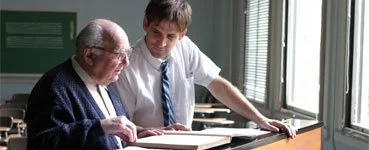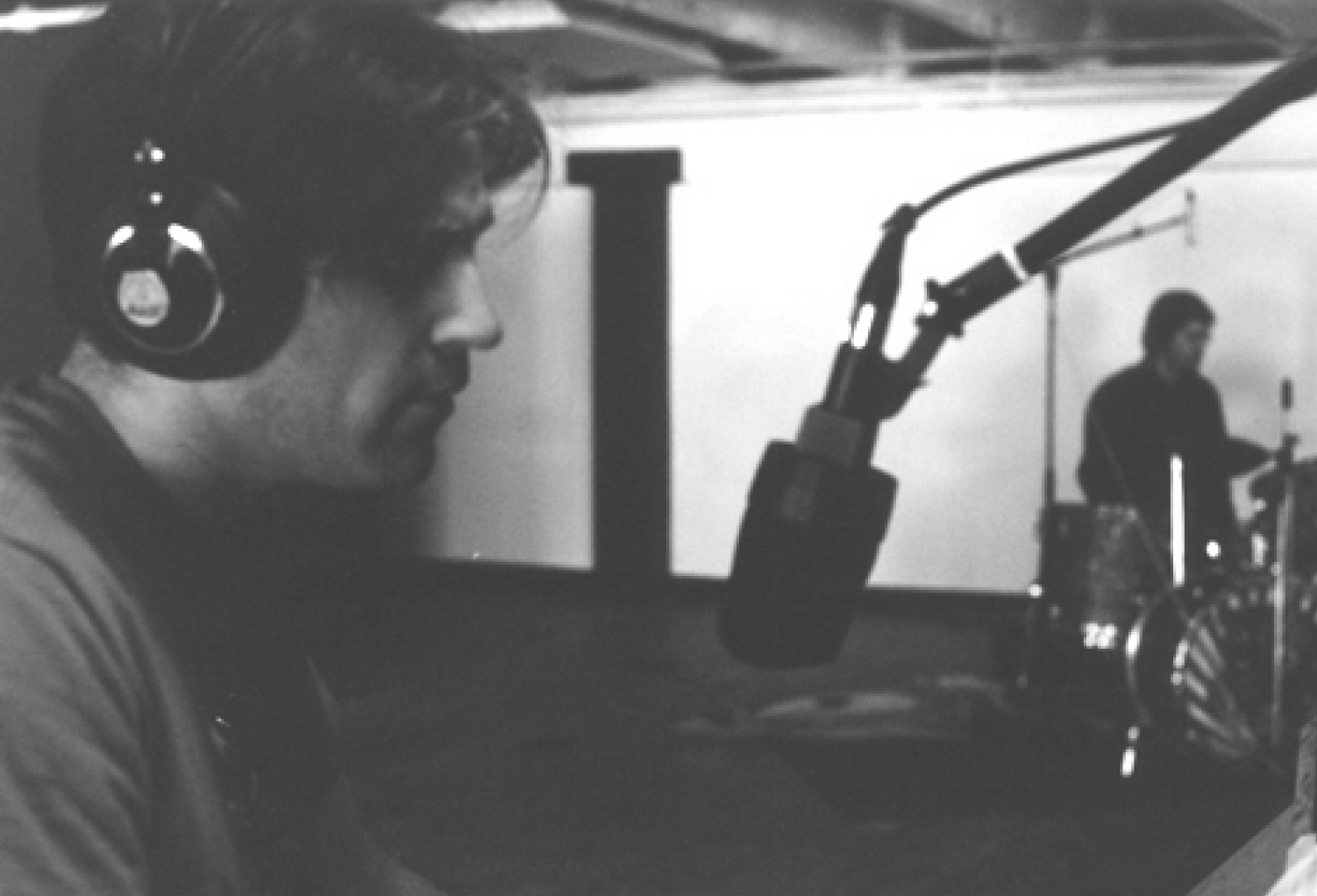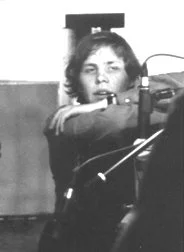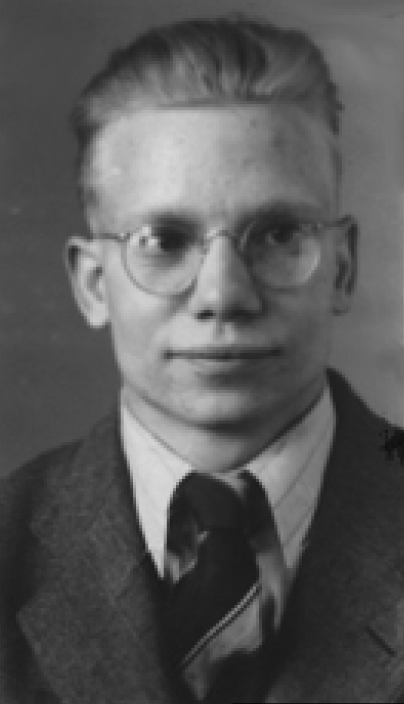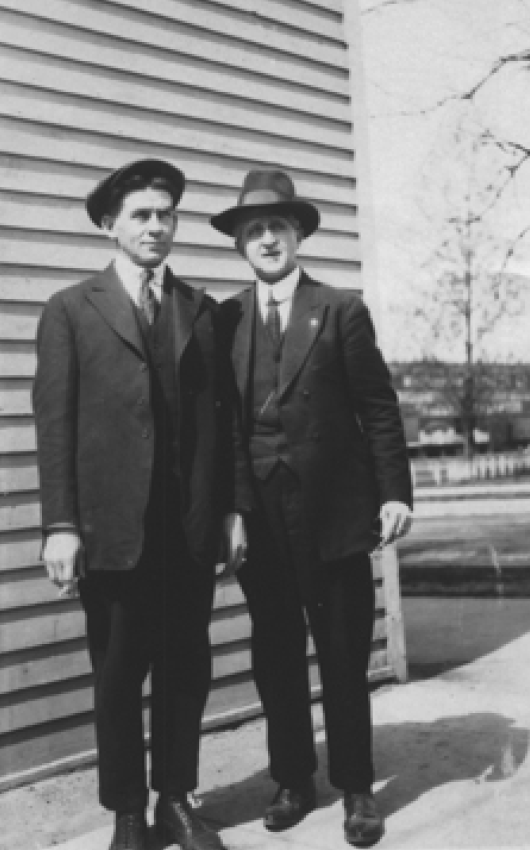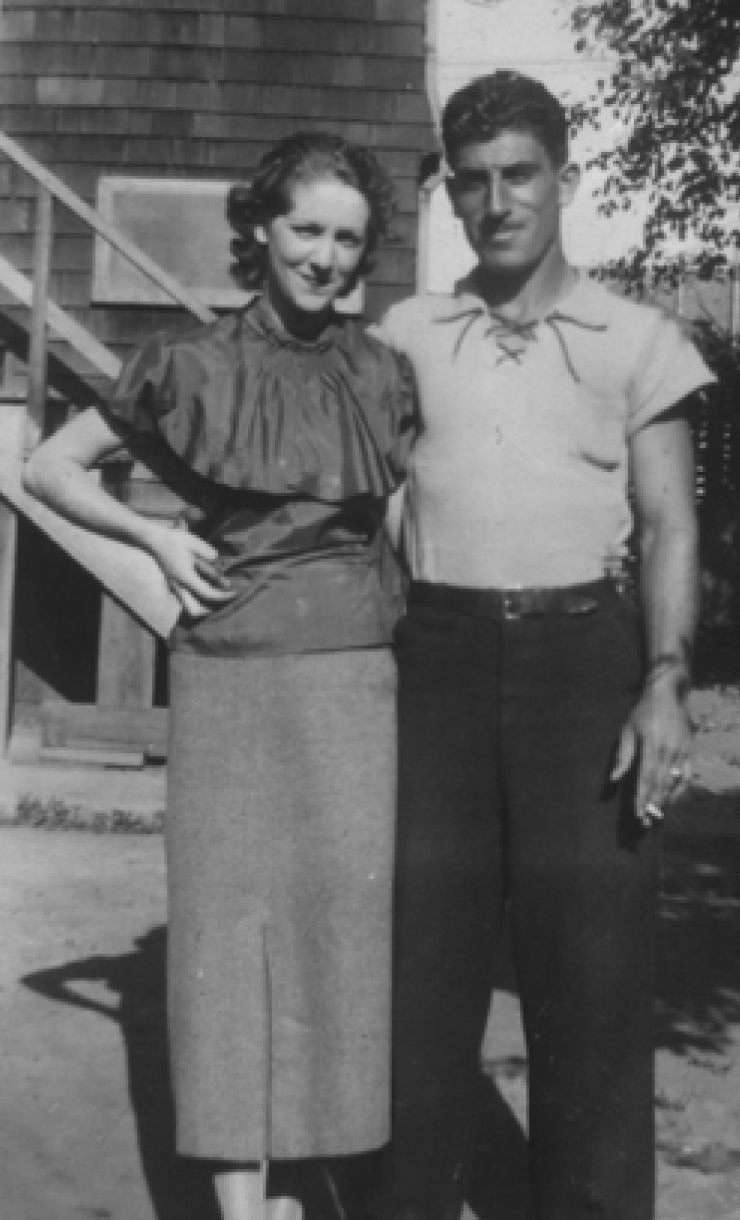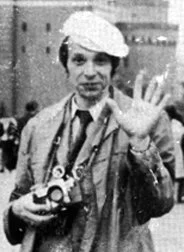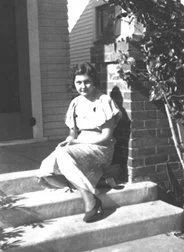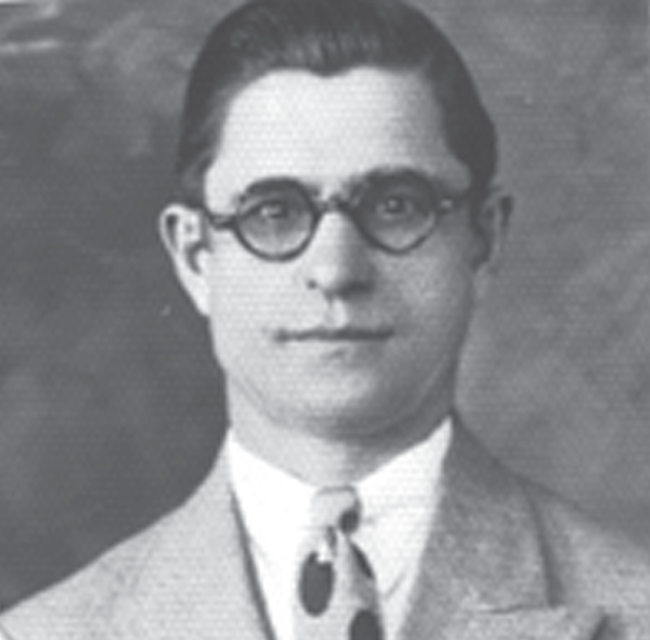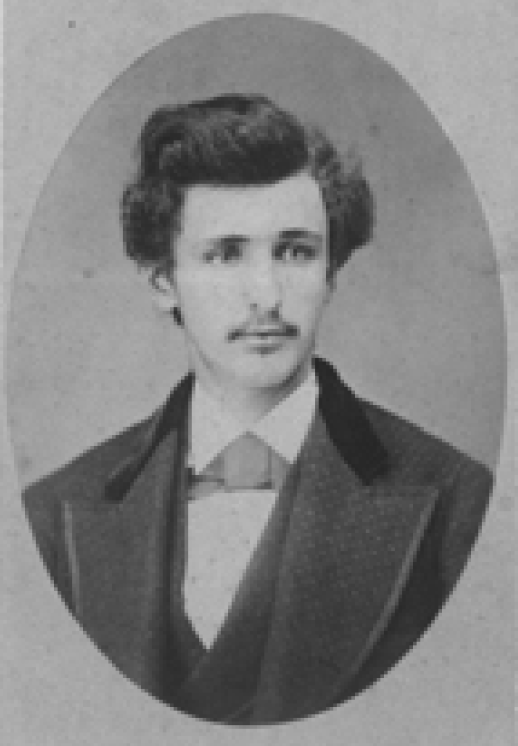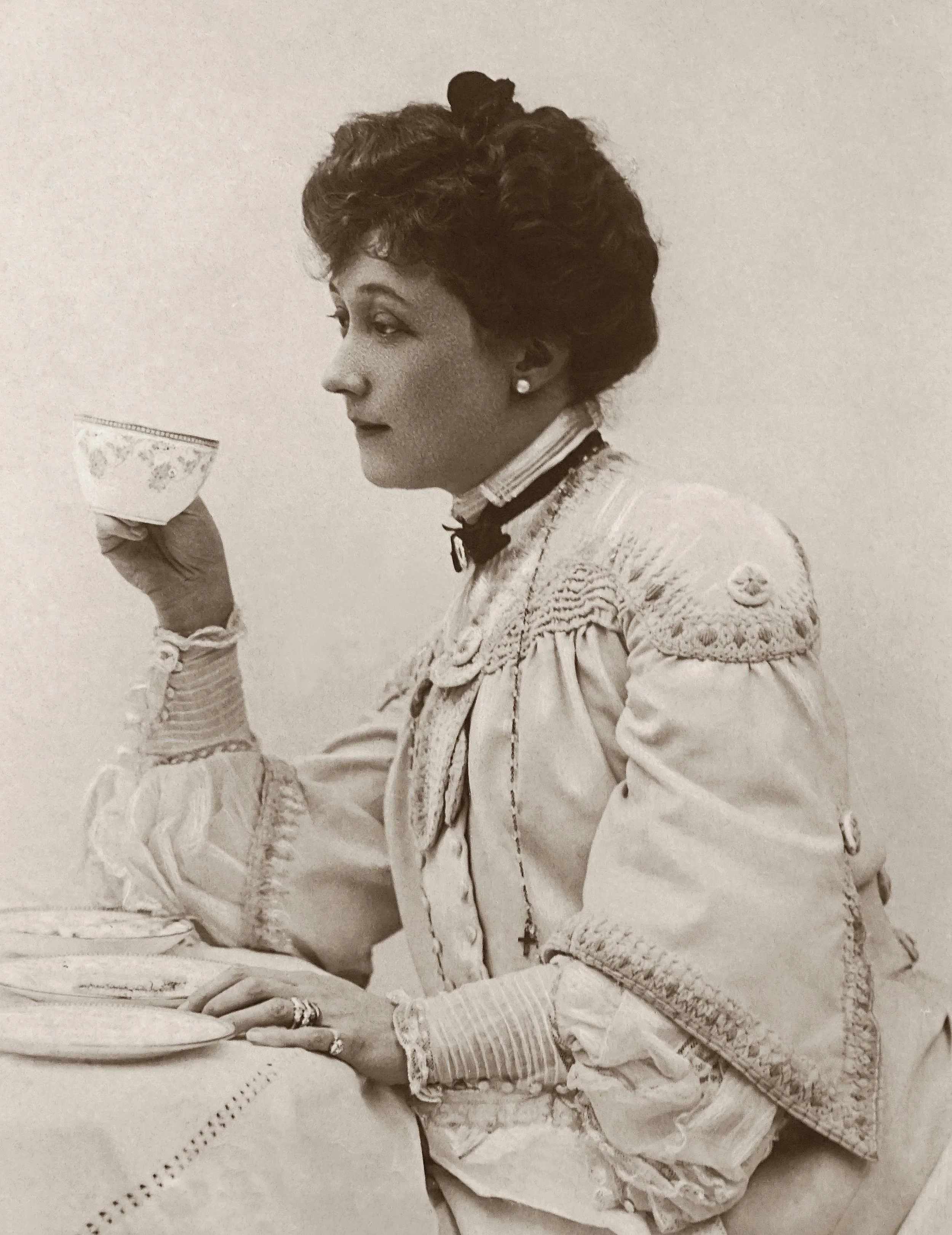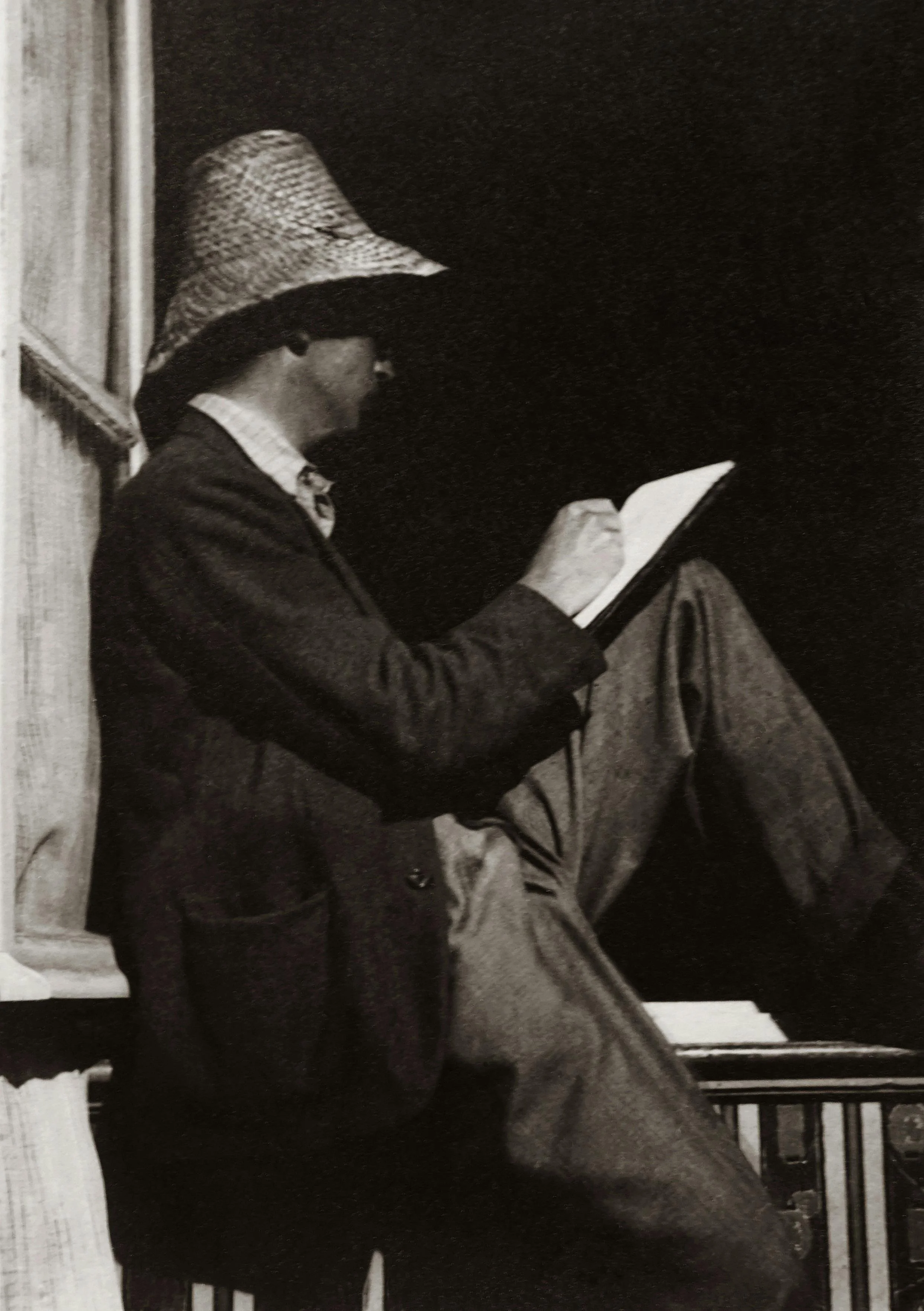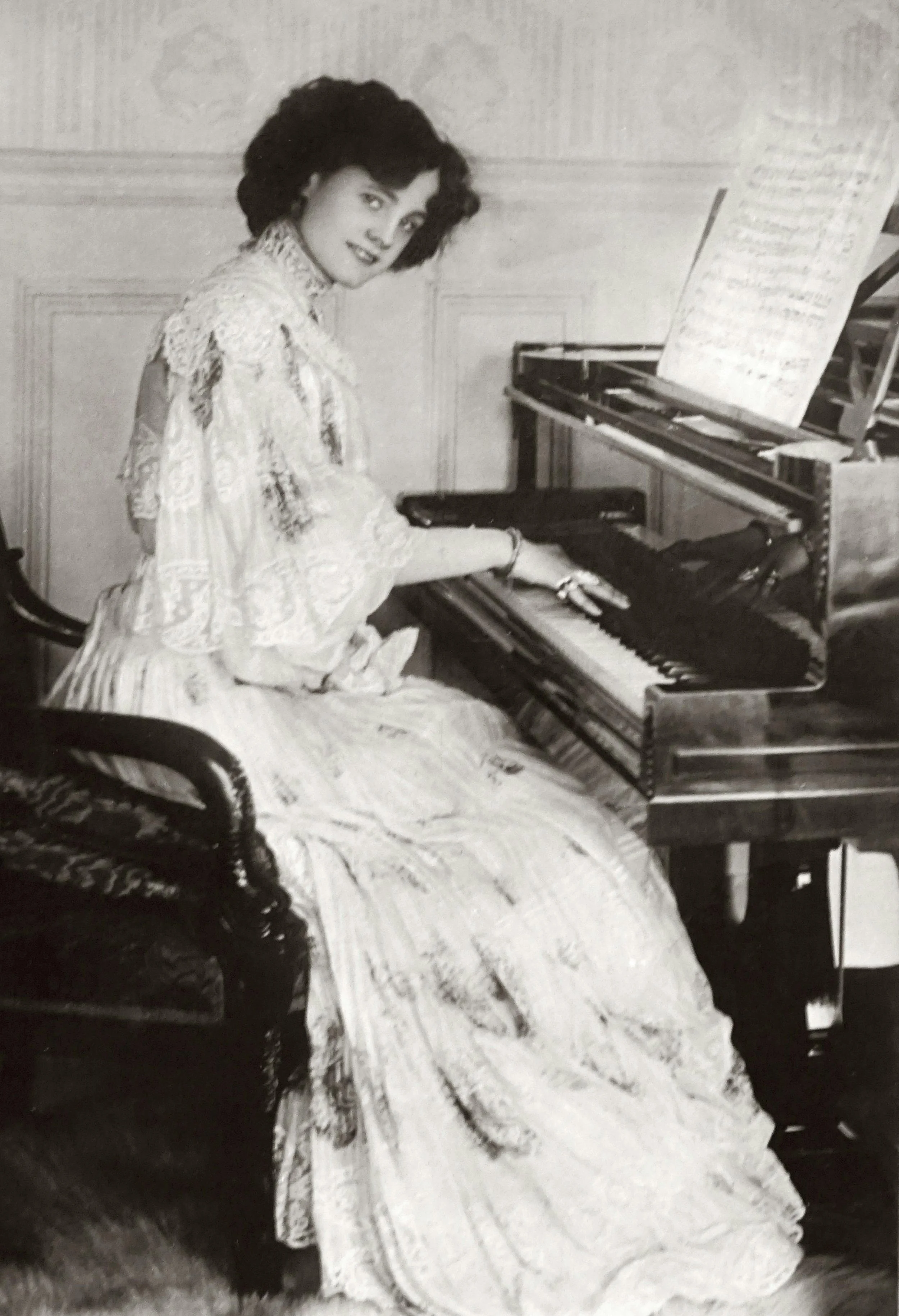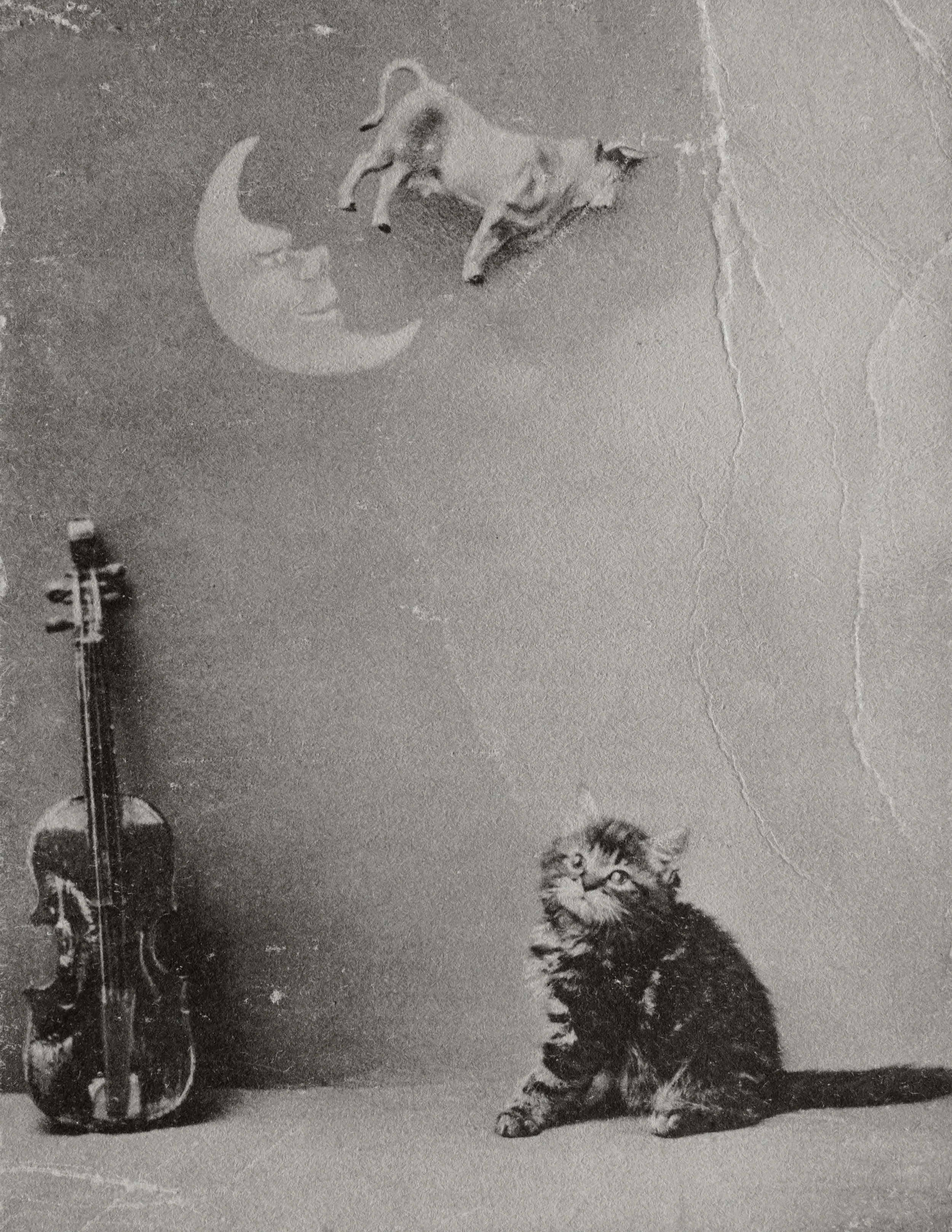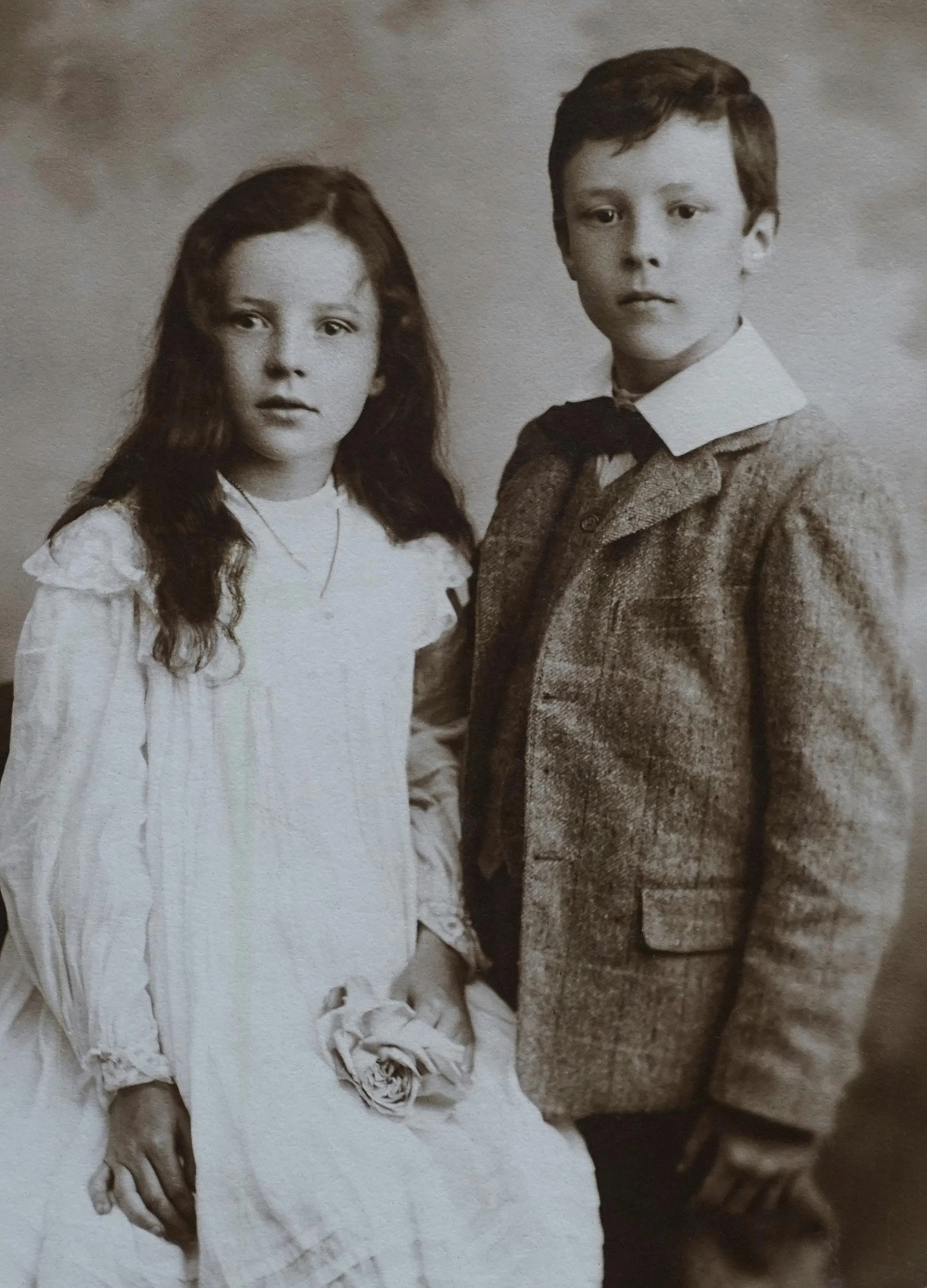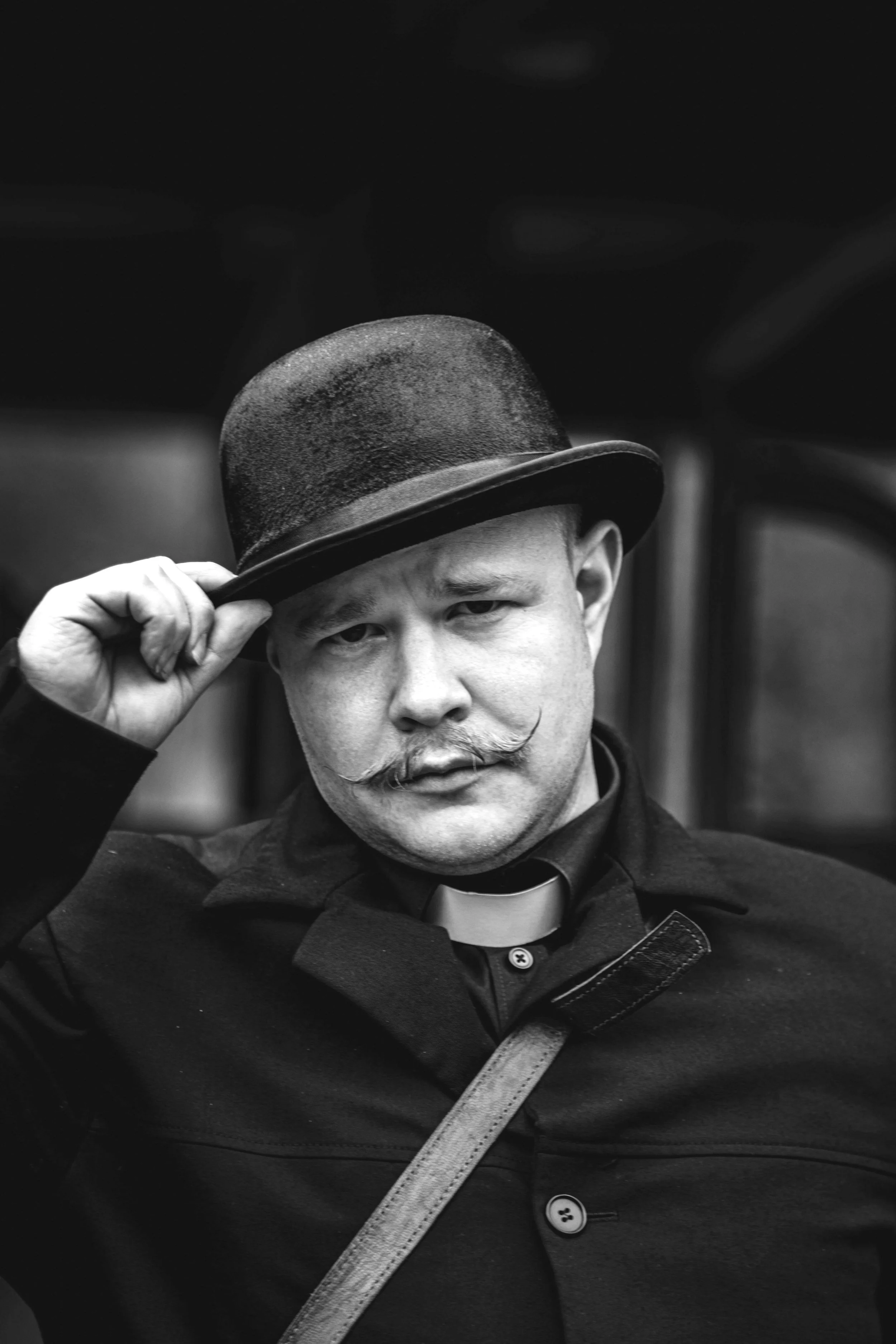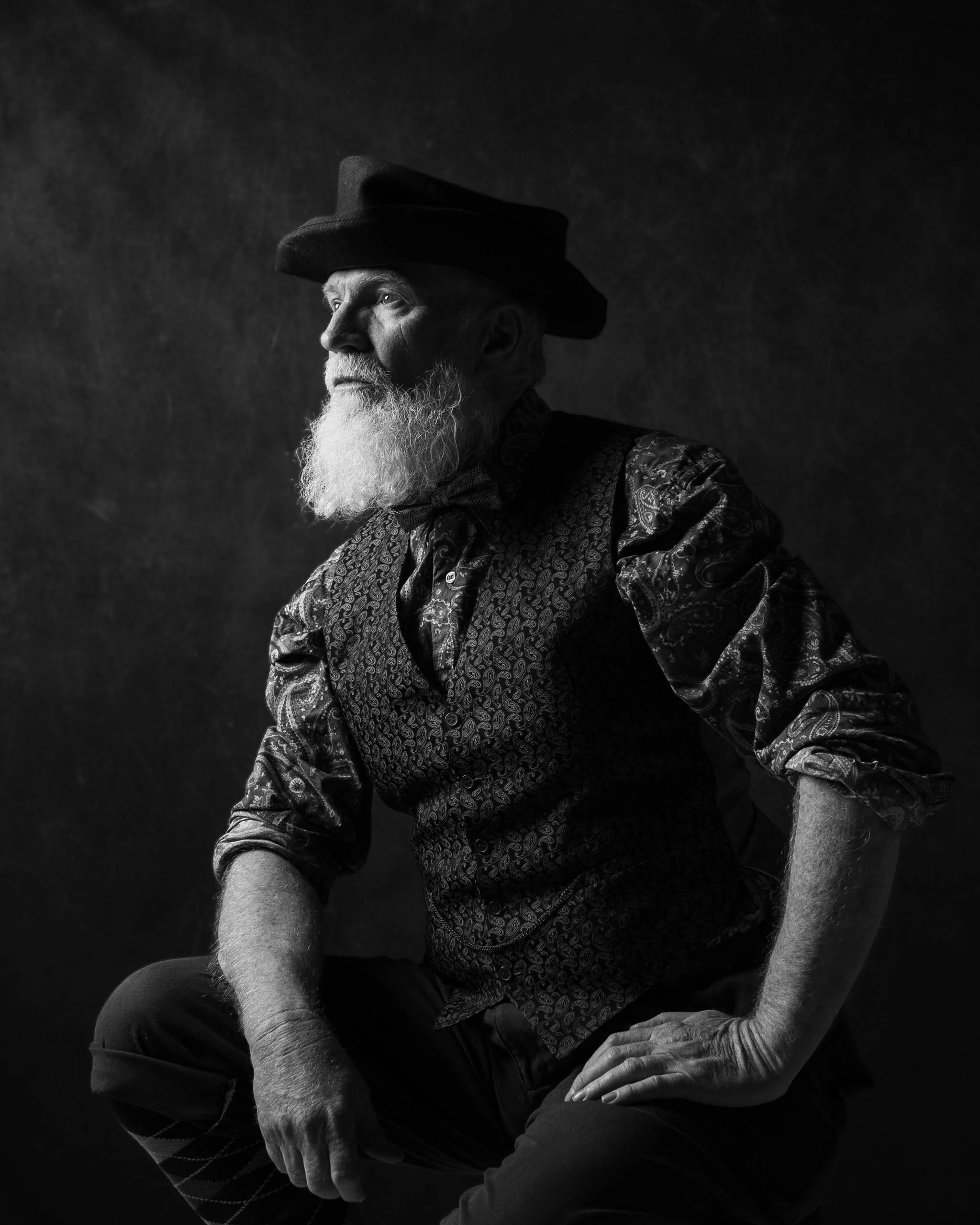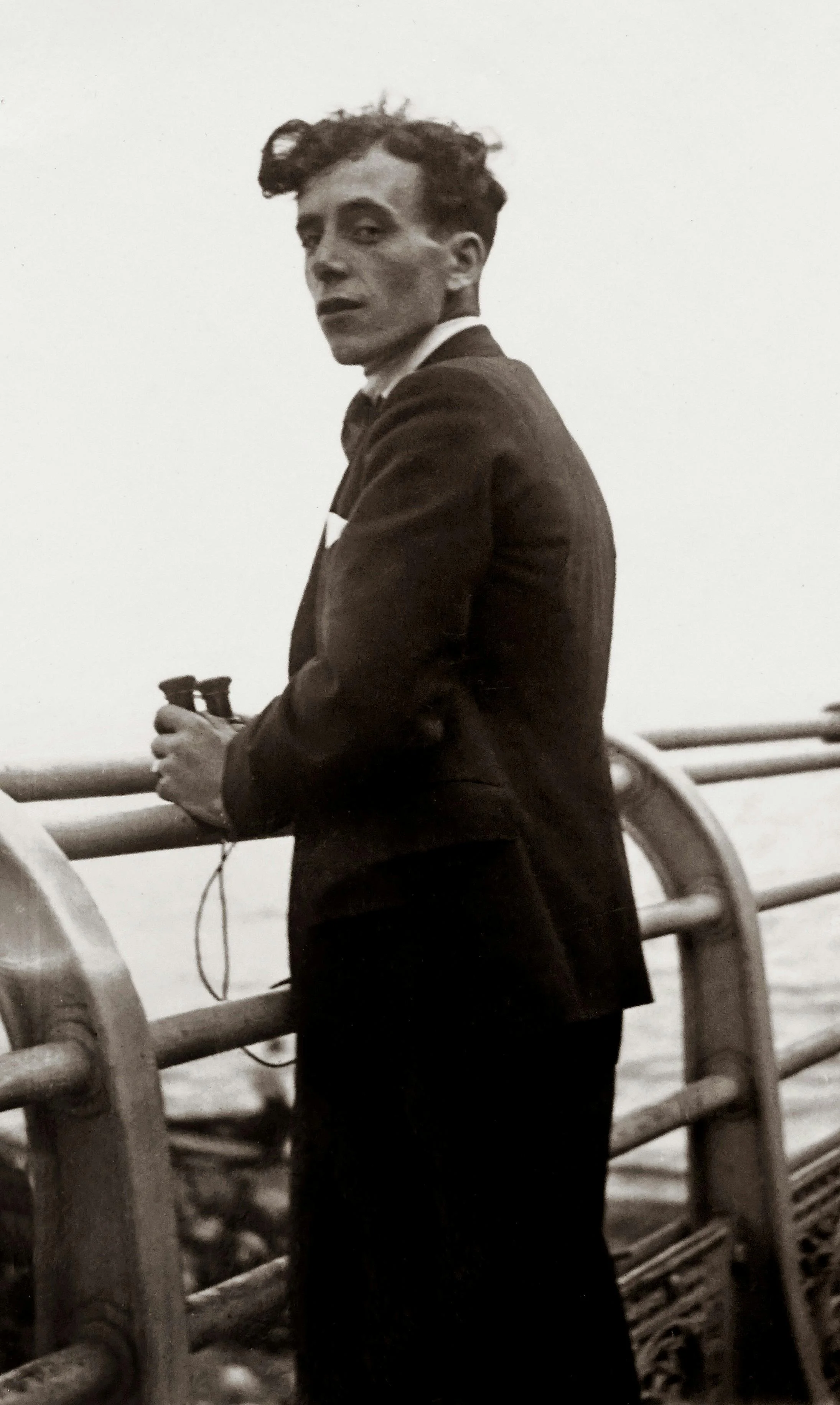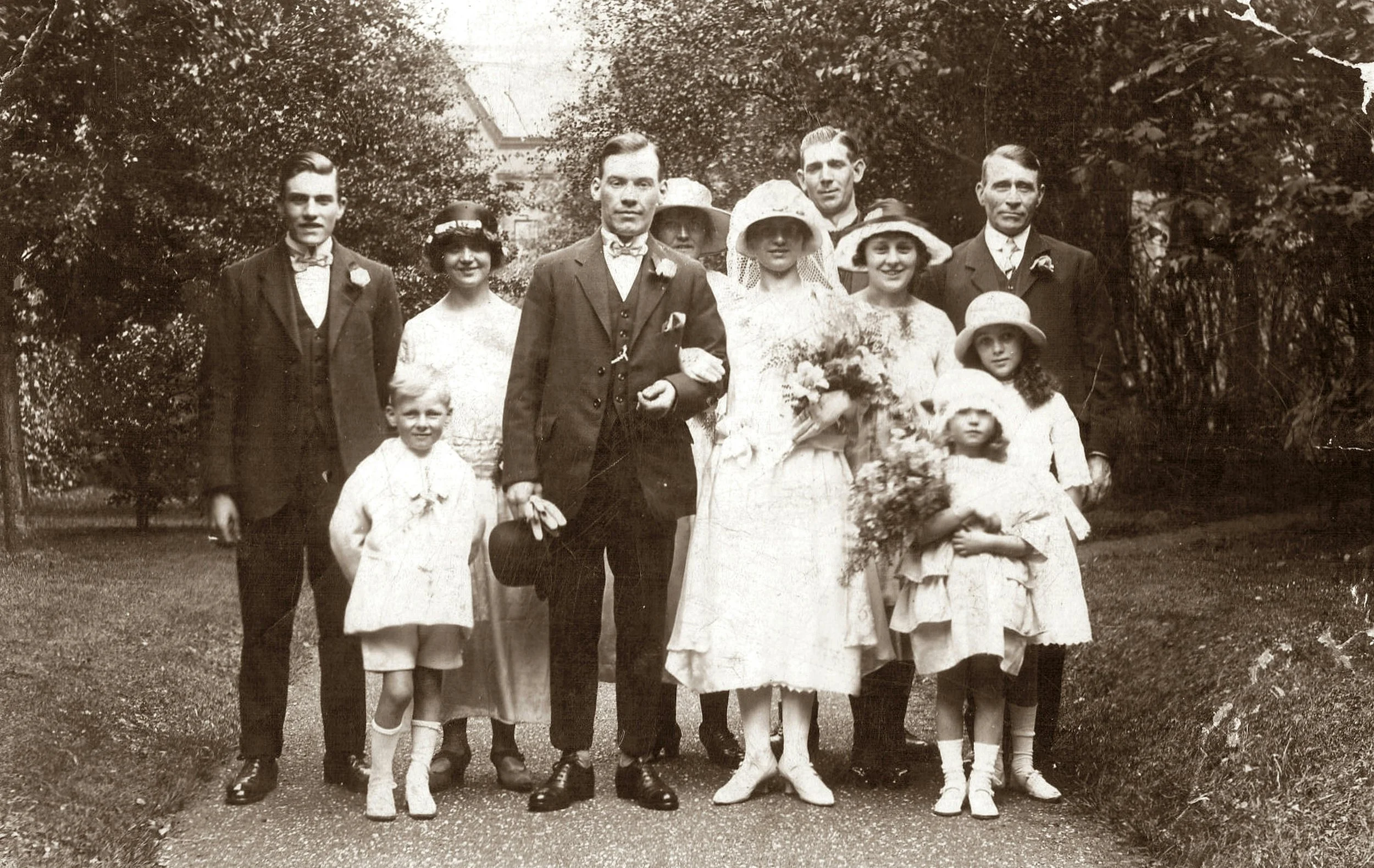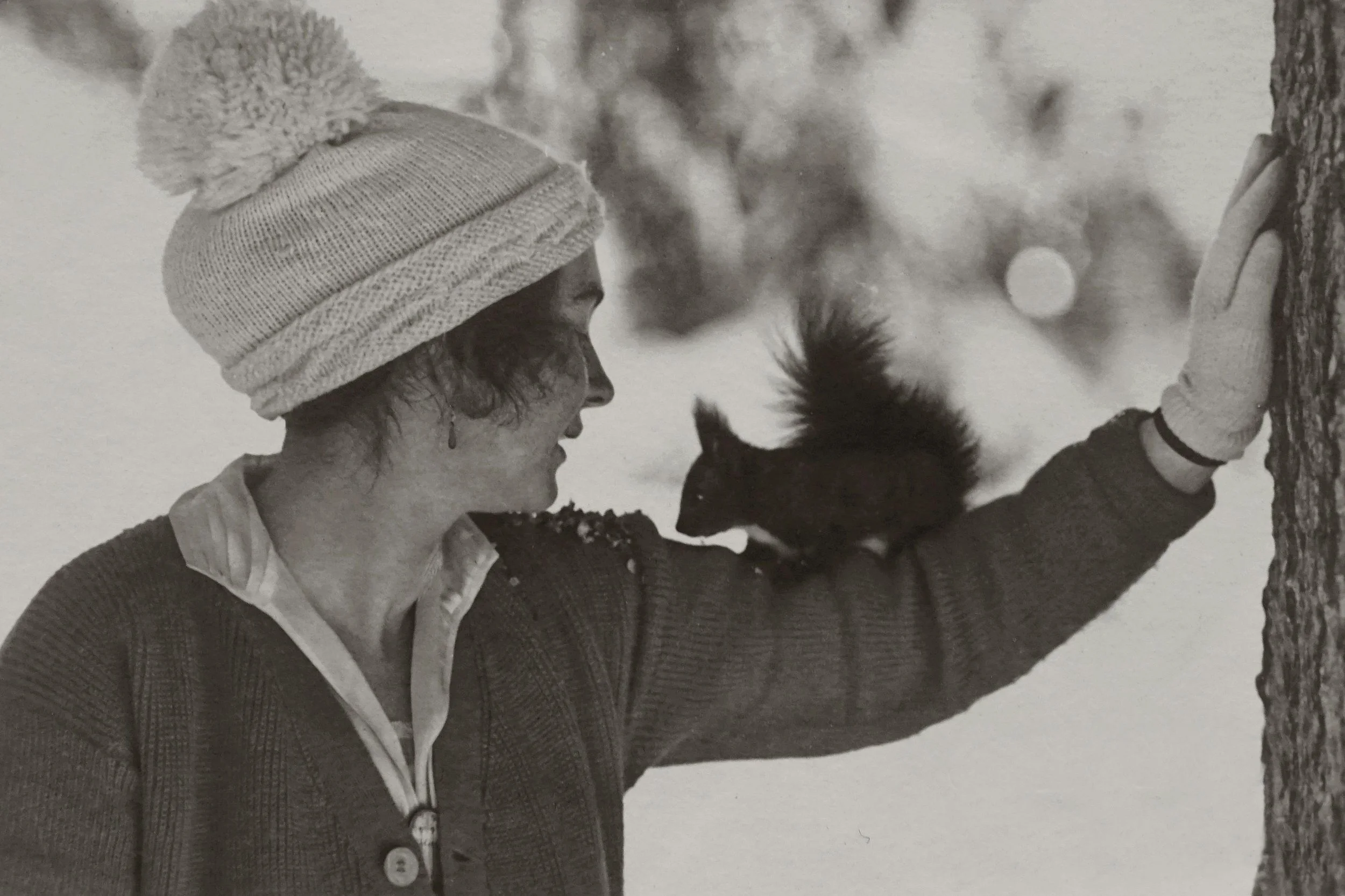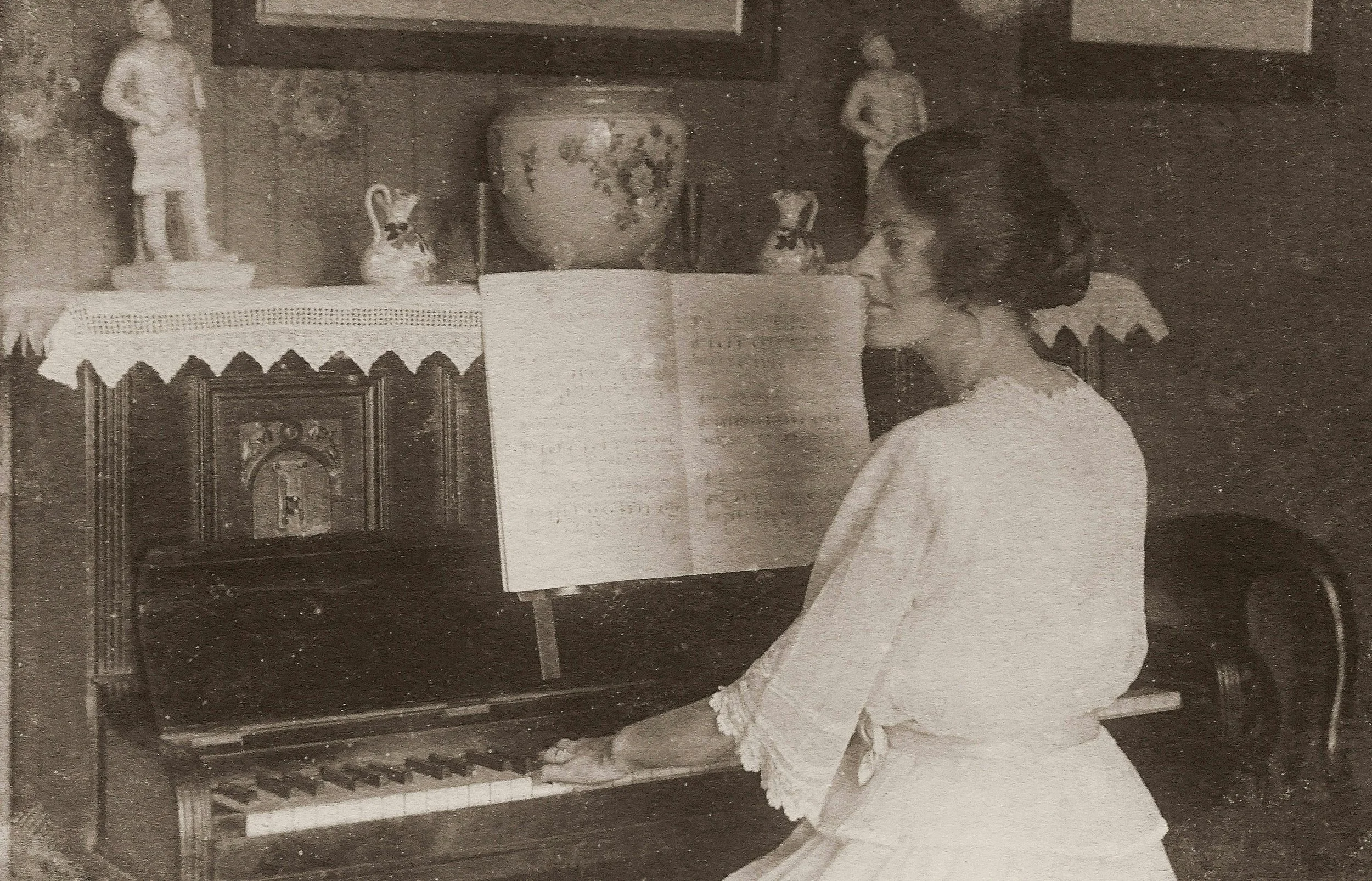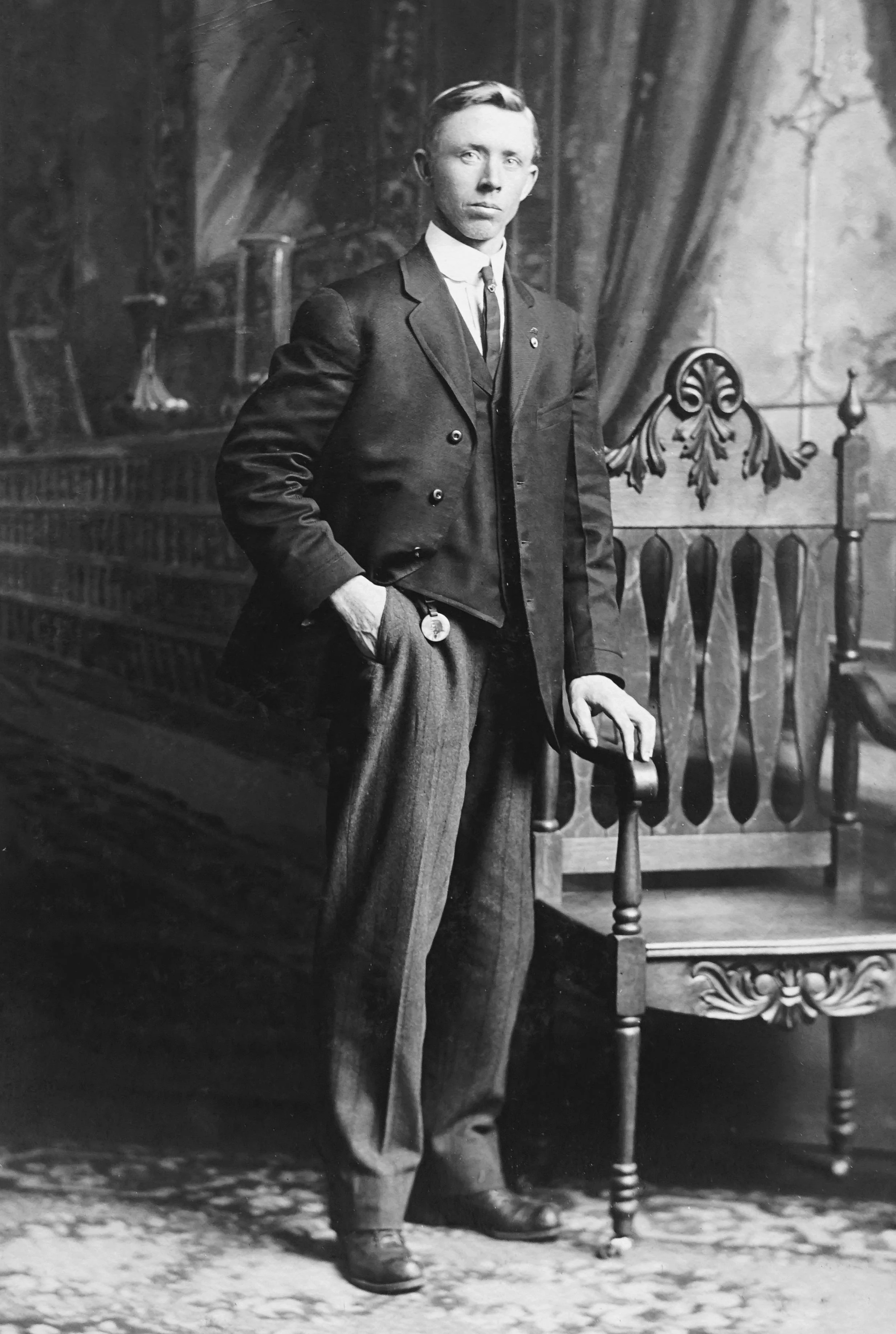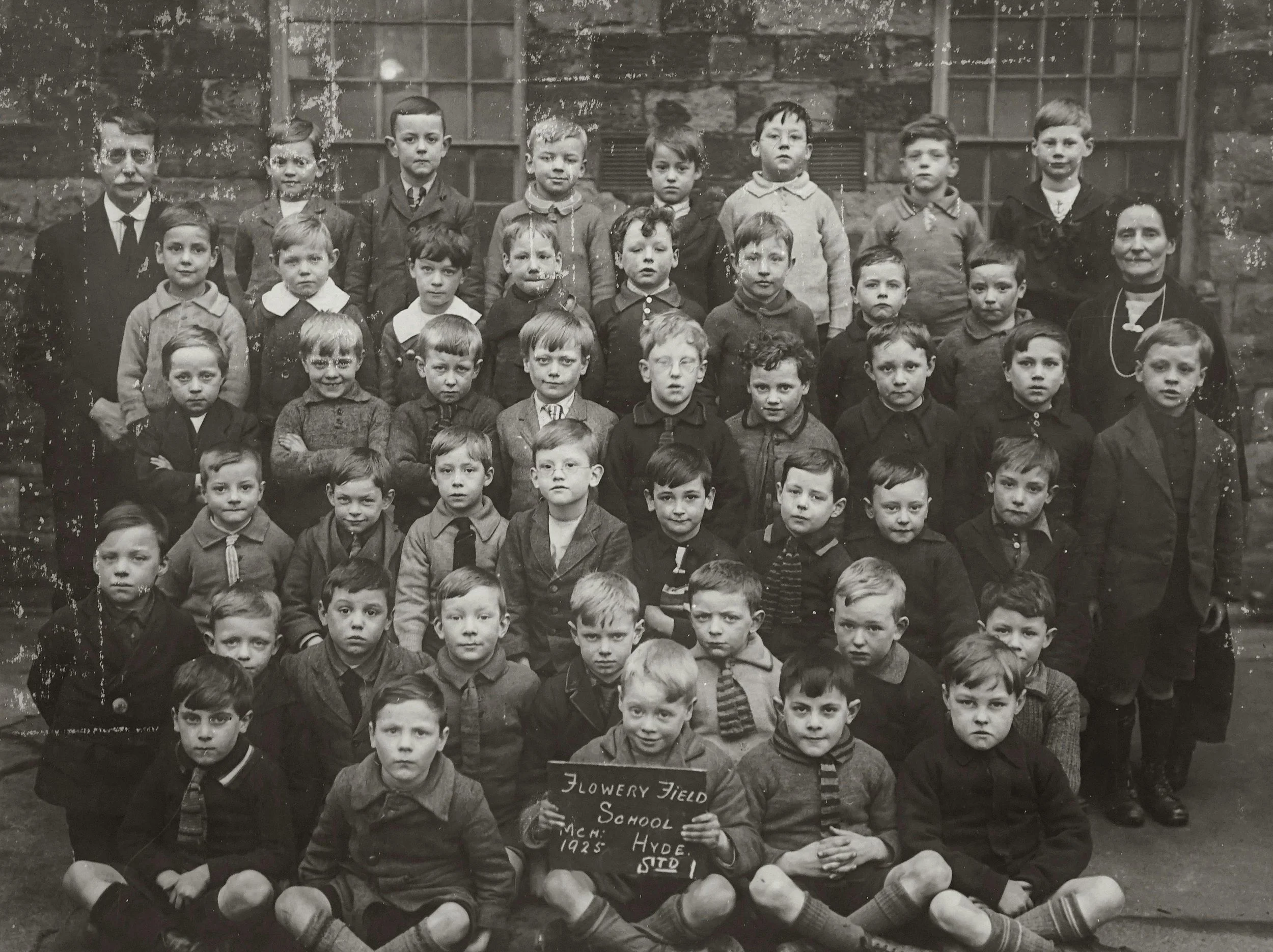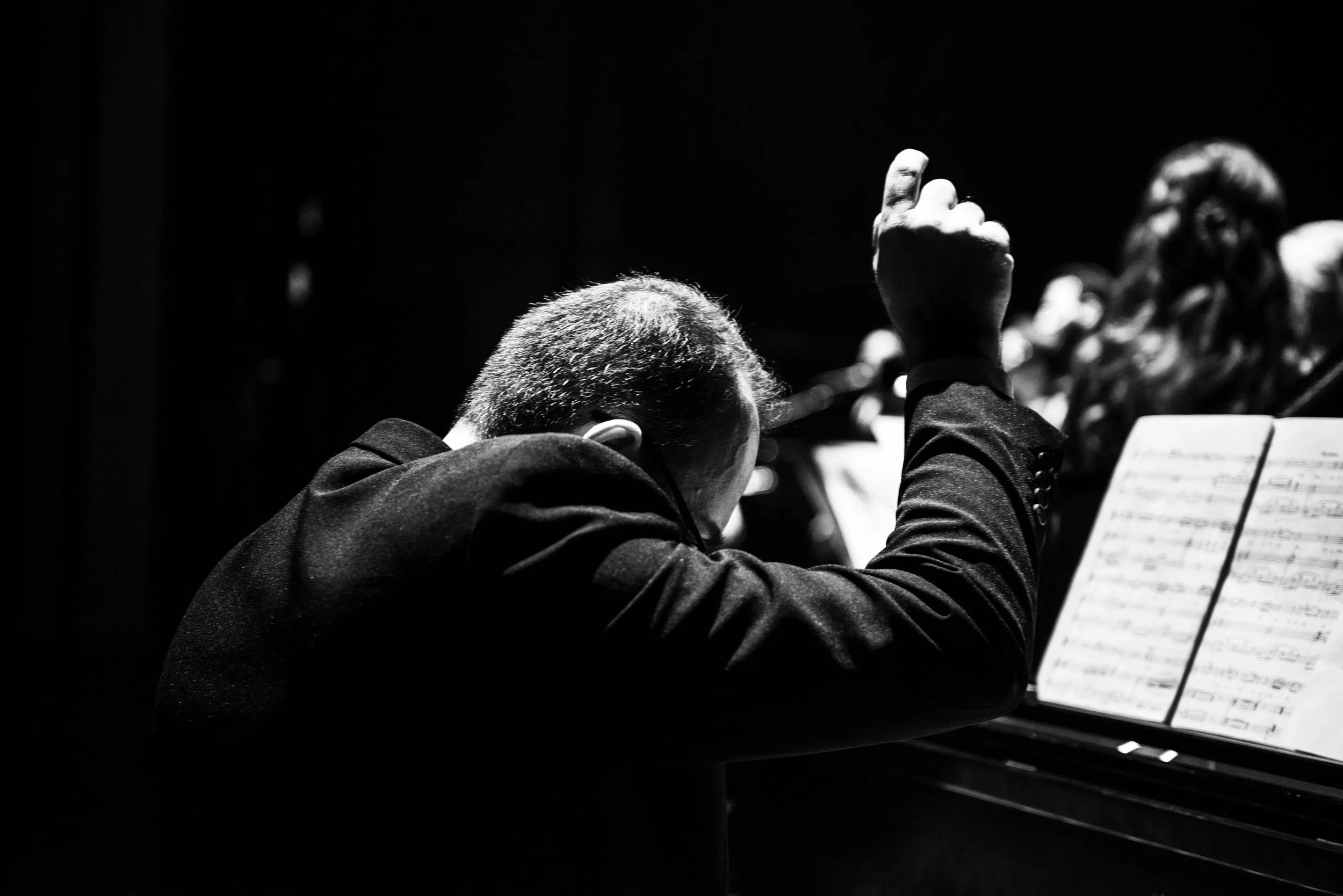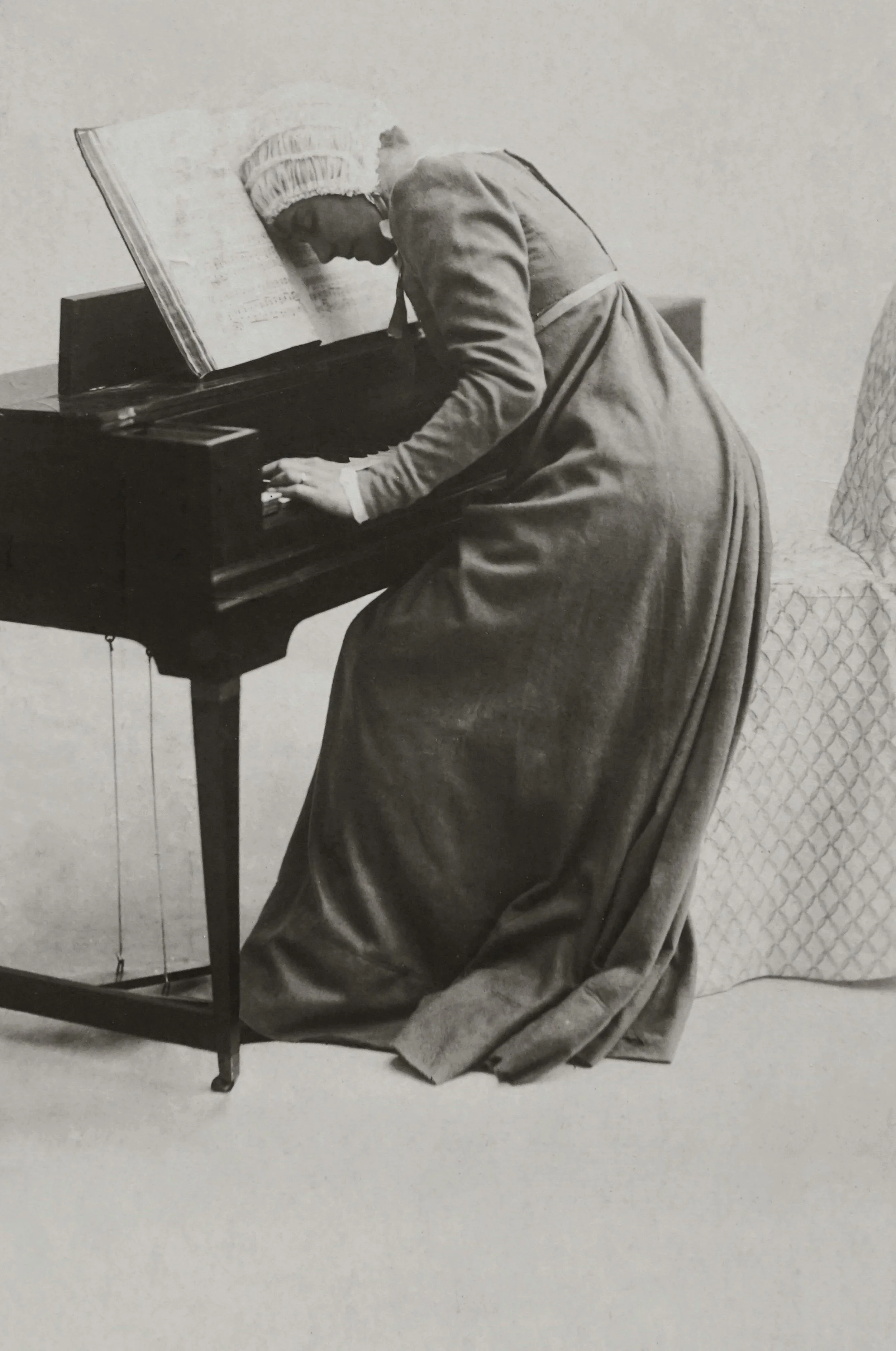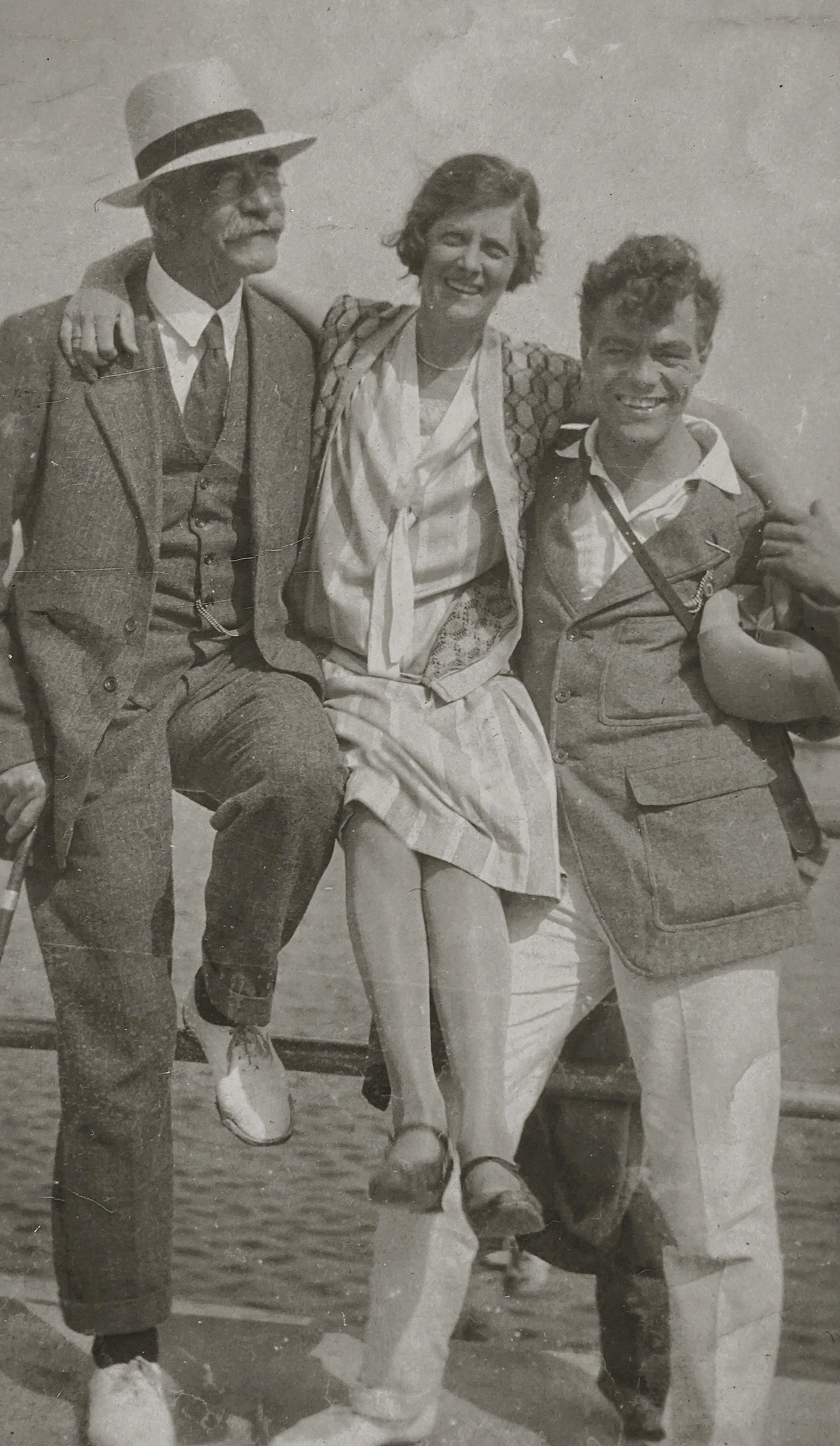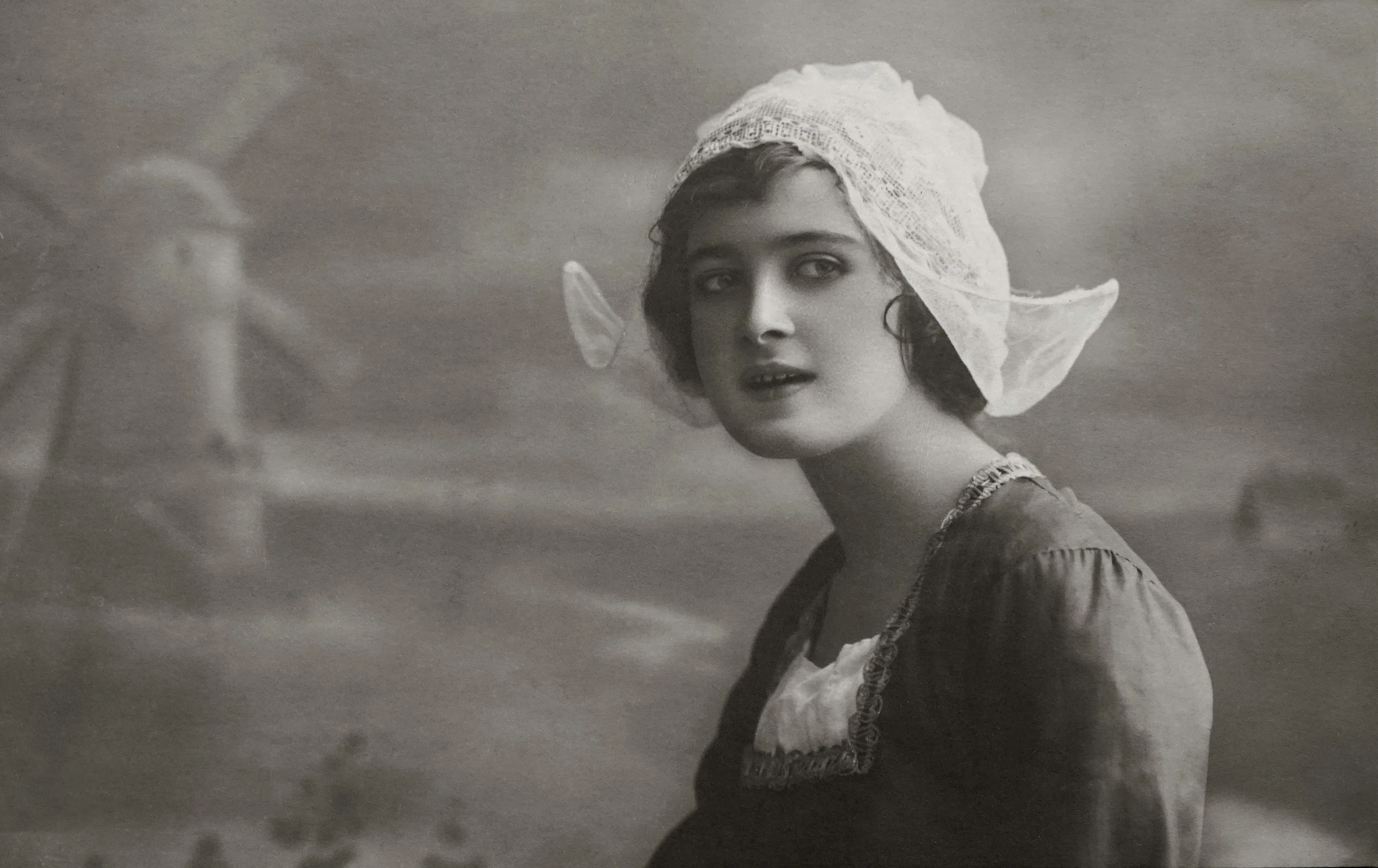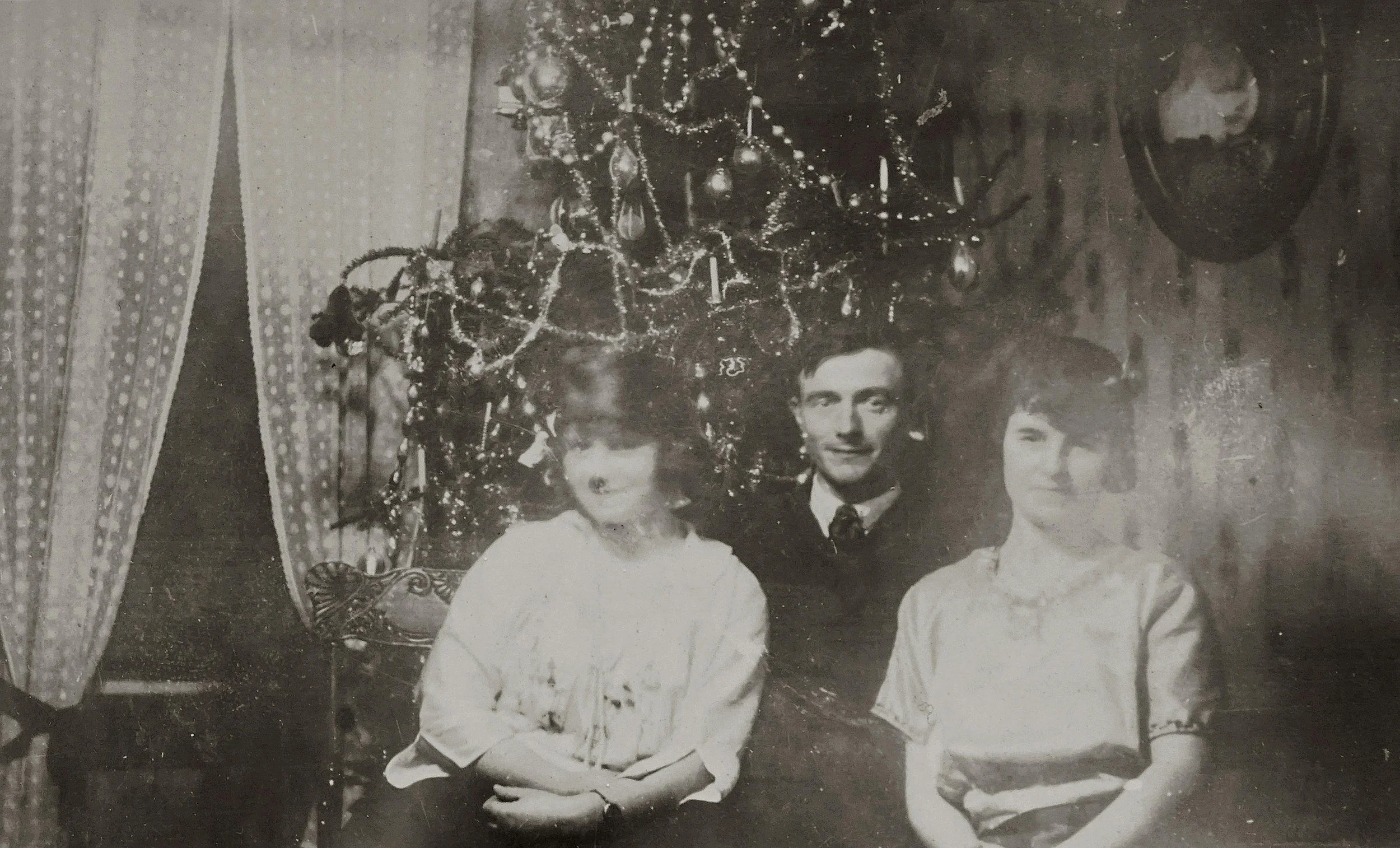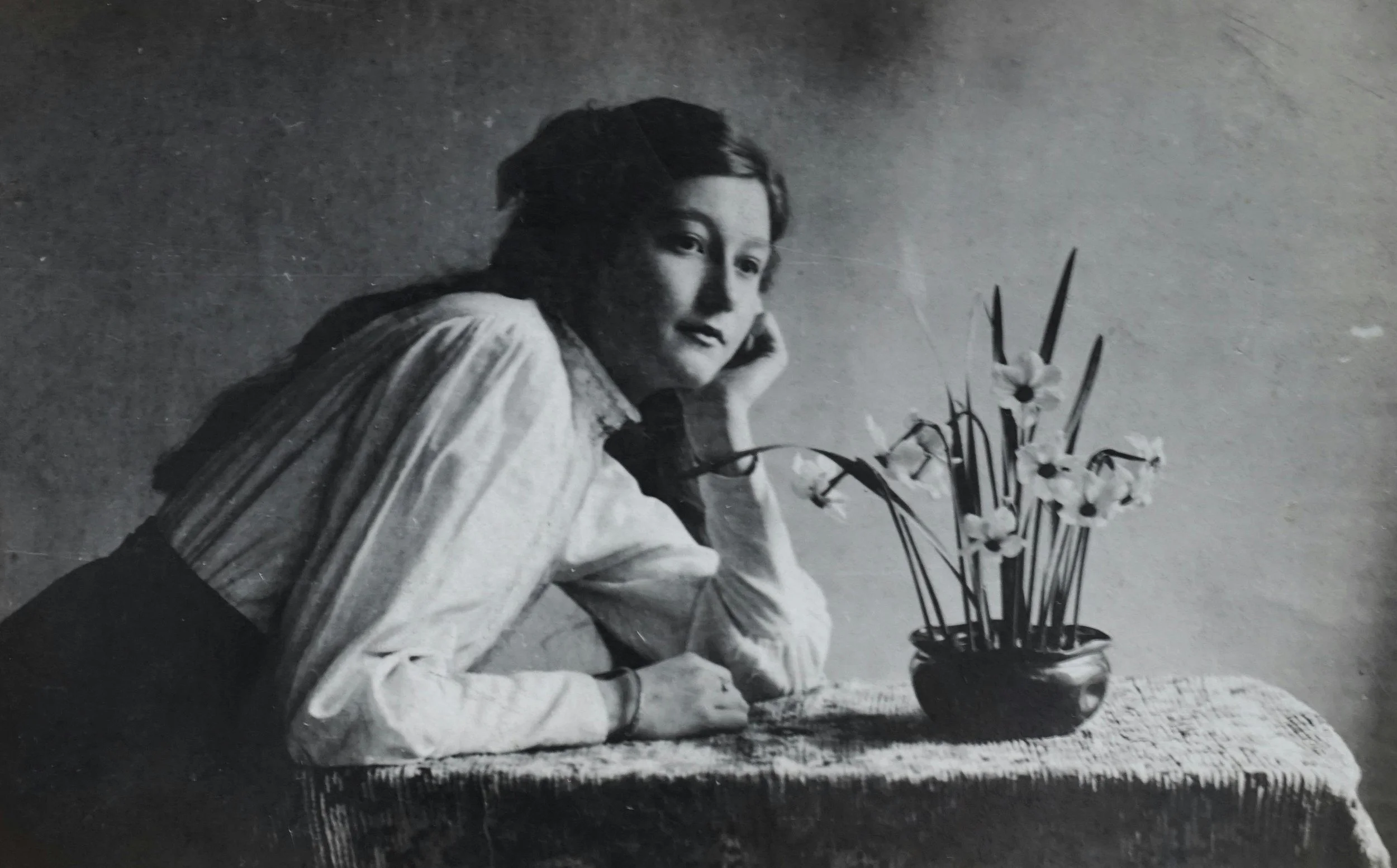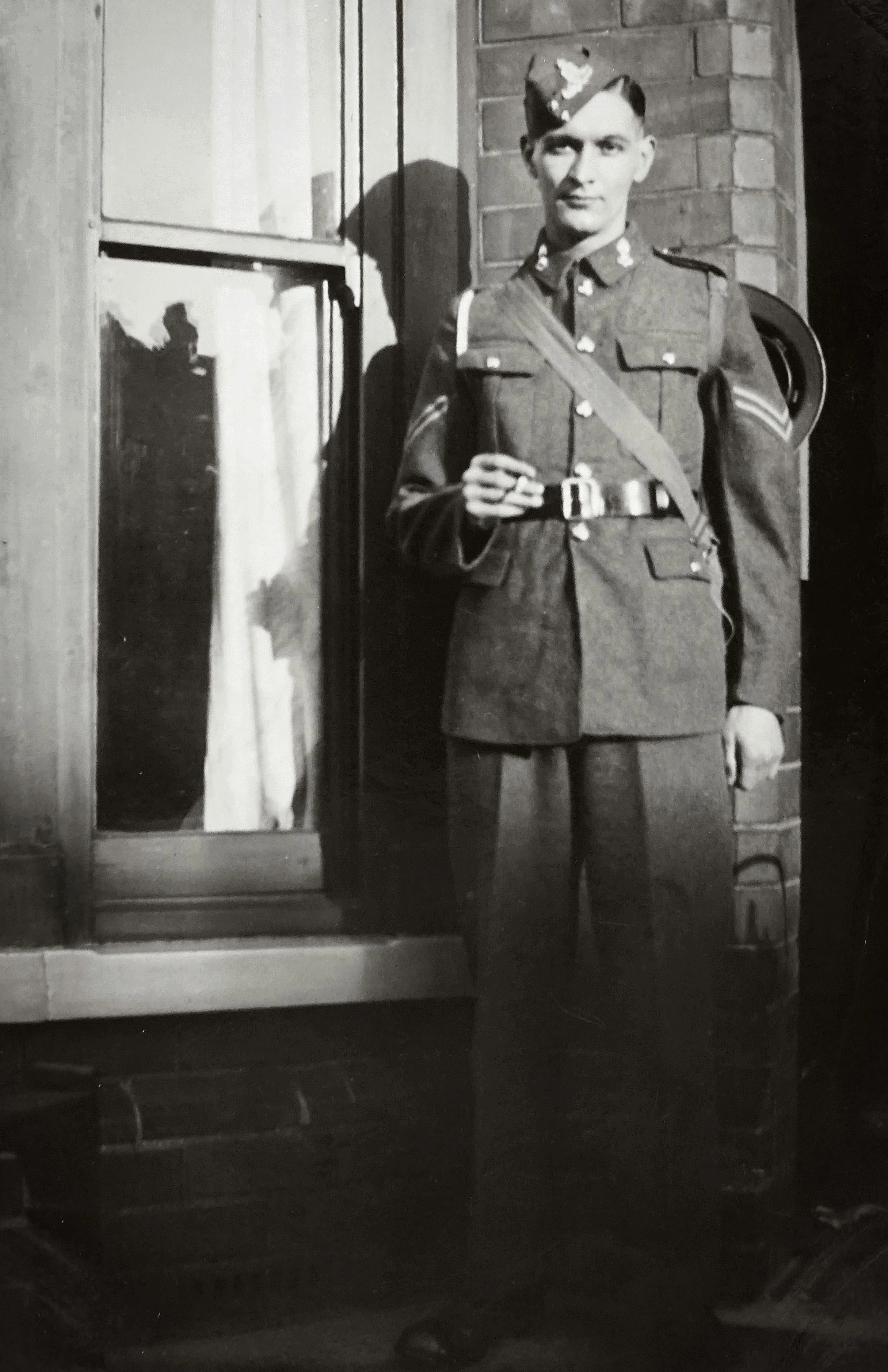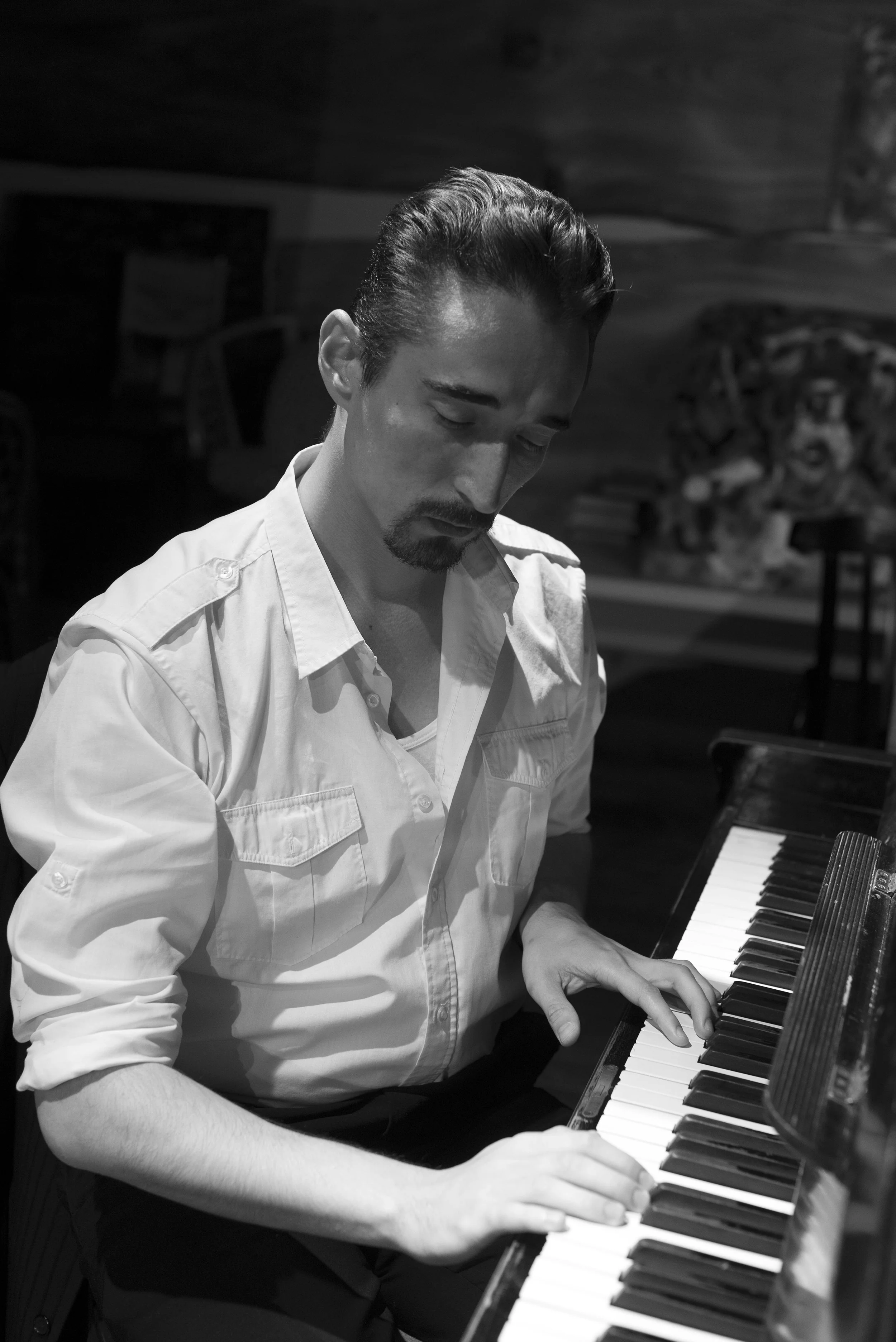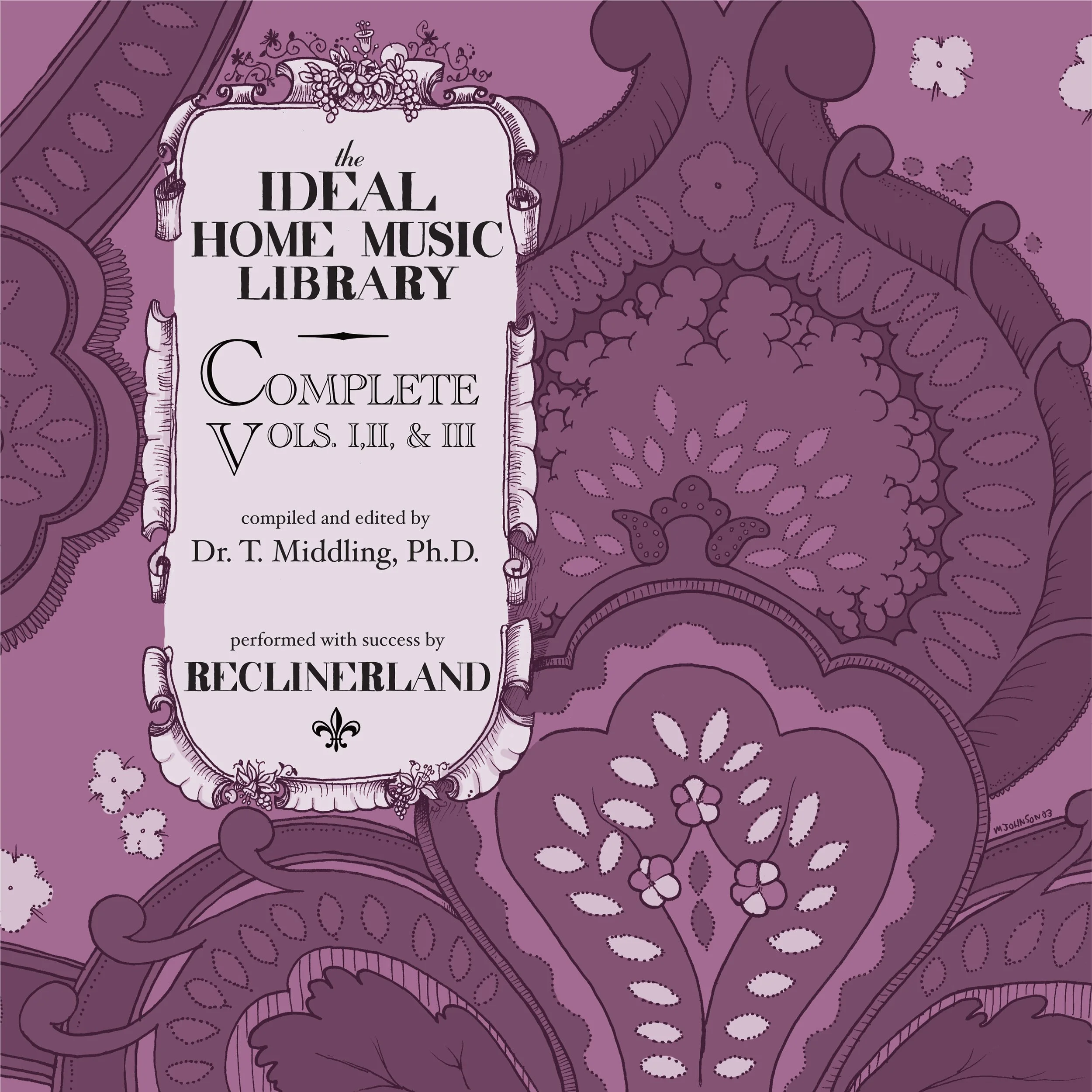
the complete ideal home music library
Buy on iTunes
Buy on Amazon
Middling and Johnson pouring over the songs in 2002..
The Ideal Home Music Library is a collection of obscure songs written by various struggling composers during the 19th and 20th centuries.
The project began over 20 years ago when in the year 2000 Dr. Tad Middling met Michael Johnson at the American Institute of Musicology in New York City, where Dr. Middling worked as a janitor and Johnson worked as a temp. Both men bonded over their inability to make headway in their chosen fields, Middling enduring discrimination as a British-born Eastern European immigrant trying to make a career out of musicology in the United States, and Johnson enduring the hardships of trying to make a career out of music.
According to Johnson in the preface to the first volume of the series, “I met Dr. Middling one afternoon when I was temping at the American Institute of Musicology. I had just left the copy room with a fresh stack of flyers hidden in a manila envelope under my arm when this old man blocked my path. He held out the original copy of my flyer, which I’d apparently left in the photocopier, and asked me in a thick British accent if I was forgetting something. Afraid that he might report me to my supervisor, I started to deny that the flyer was even mine. But the old man just smiled, winked, handed me the flyer, and said, ‘Have a good show, Lad.’ During the next few months, he often stopped by my cubicle on the way to emptying somebody’s wastebasket or something to start up a conversation with me about travel, about my band, or about music in general. After a while, this funny old guy became the only person in the office I could relate to, and we became friends. He had a PhD in Musicology, but it was so hard to find a position that he took the custodian job in order to get his foot in the door. The trouble was, being a custodian, no one at the institute paid any attention to him. Well, one afternoon during lunch, he showed me a big old dusty book of songs he’d found hidden in the Rare Book Room in the library. He asked me if my group might be interested in recording them. They were nice songs, but I protested, saying that Reclinerland was just a pop band. We didn’t do jazz. ‘Come on, Son,’ he said, grinning, his eyes widening, ‘It’s music.’ He had a point, and I said okay. Right away, Dr. Middling started researching the songs and I began practicing and rehearsing them. All of the information about the songs comes from Dr. Middling’s painstaking research.”
Volume 1: Show Songs
After Johnson left New York City in 2001, he and friends Nate Halloran, Cory Gray, Derrek Trost, Jenny Conlee, Morgan Grace, Chad Crouch, Adam Selzer, and Colin Meloy recorded jazz versions of the first volume at Type Foundry in Portland, OR with Adam Selzer engineering. The album was mastered by Michael Johnson and Chad Crouch and was released on HUSH Records in 2003. The CD came with a 32-page booklet of Dr. Middling’s research findings. Michael Johnson illustrated and designed the artwork for the CD face, booklet and tray card. The liner notes were written by Dr. Middling and Kevin Sampsell. Research and permissions were dealt with by Dr. Middling. Fred Schaff at CD Forge handled the manufacturing. Chad Crouch and Michael Johnson produced.
Volume 2: Parlor Songs
In 2007, Johnson teamed up again with Dr. Middling when the latter relocated to Seattle after the enormous success of the first volume and started his own research firm. Middling took the enormous book of old songs with him, and the pair decided to release another collection of the songs. This time, instead of arranging the songs for jazz combo, Johnson recorded them exactly as they appeared in the book. Long time friend and musical luminary Jenny Conlee agreed to play the piano on the album, and Johnson and Conlee set up microphones in Conlee’s living room and recorded the songs between January and April of 2008. A small hiccup in the recording process occurred when Johnson recruited Kaitlyn Ni Donovan to sing Up On The Orange Moon after having recorded the song. Since the recorded version was out of Ni Donvan’s singing range, Johnson rewrote and re-recorded the song on Scott Garred’s living room upright piano with Steve White on piano. Ni Donovan lent her vocals to two of the songs and the album was mixed and mastered by Scott Garred and Michael Johnson, and was released on Johnson’s George Recordings label in 2010.
volume 3: songs for Orchestra
In 2022, while Johnson was living in Paris, France, he received word that Dr. Middling had died. According to the police investigator’s report, after locking up the office of his research firm in Seattle one evening, Middling was strolling home with “The Ideal Home Music Library” song book snug under his arm, when he was set upon by a gang of rival musicologists who demanded the book. Dr. Middling refused, so the ruffians tried to pry the book from his hands. The vicious tug of war that ensued shocked the poor man and caused his heart to fail. The thieves literally had to pry the volume from Dr. Middling’s cold, dead hands. “I was crestfallen,” recalls Johnson. “I wanted Tad’s passion project to conclude in a big way, so I set about arranging many of his favorite songs from the collection for orchestra.” Dr. Tad Middling is survived by his cat Migrou, and, by Johnson, his only friend. Speaking candidly during an interview in Obscure magazine, Johnson said, “The man’s intrepid spirit, passion for music, and passion for research ought to be an inspiration to all of us. Rest in power, Tad.” The third volume was recorded at Reclinerland HQ in the summer and autumn of 2022 by the Reclinerland Symphony Orchestra; mixed and mastered at Bughouse Studios in Stockholm, Sweden by Jarkko Heiniö; and released on George Recordings in 2024.
Johnson and Derrick Trost at Type Foundry in 2003.
the songs and their composers

Give Up Your Film Career Long Island City Love Song The Girl Of My Dreams Come On Summer Crash Site One Of Those Nights Miracle Of Miracles My New York Oh, James Stayin’ In (And Playin’ A Tune) The Lady From Reims Rue Lane All Through The Morning What Were The Chances? There’s A Wondrous Place Below Us The Minister’s Cat (Don’t Stand In The Wind) Ma Maison Voyageuse I’m Cookies For You The Garden Party As I Go Forth Into Dreams I Suppose I’ll Always Be Alone No, No, This Will Never Do! Il Fait Calme Up On The Orange Moon A Storybook And A Lullaby London At New Year’s One Night Soon Girls Don’t Like Me Love Letter To The South I Had Coffee This Morning I Miss Your Mess Anytime, Anywhere, Anything If Ifs And Buts Were Candy And Nuts (We’d All Have A Lovely Christmas) What Now? Quiz Night At The White Horse Pub That’s It! Show’s Over! Go Home!
All songs have been painstakingly researched by Tad Middling, PhD. Bibliography available upon request. Kindly direct all snail-mail inquiries to Research Wing c/o Reclinerland HQ, PO Box 6174, Nighthawk, WA.
give up your film career (lenny’s theme), My new york
Adam Selzer
In 1948 twin brothers Ira and Hamilton “Hammy” Goldberg bestowed upon 20th Century musical theater an absolute treasure that would turn out to be their downfall: a show by the name of The Heights!. The tragic story of a man who loses his sweetheart when she relocates to the Big City to become a film star, The Heights! premiered at the Music Box Theater on the lower east side. The success of the play was the cause of much tribulation in the Goldberg brothers’ personal life. Hamilton had inadvertently married his cousin, a shallow, party-going nag named Brenda Holstein, back in the summer of 1916 in Philadelphia. Shortly after the successful run of The Heights!. He found out that Brenda was running a scam on him and plotting a lucrative divorce. What he didn't know was that his mistress, one Margaret Rett of New York City, was Brenda's partner in the scheme. Margaret overplayed her part and found herself in love with Hamilton. Eventually Brenda learned that Margaret really did have feelings for Hamilton and severed her relations with both of them. A Pennsylvania judge ruled that Brenda had no right to any of Hamilton's money and left the woman without a home or a dollar to her name. Both Brenda (out of shame) and Margaret (out of guilt) committed suicide shortly after. As if that weren’t enough controversy, Hamilton and his brother Ira entered into a bitter dispute over publishing rights for the show. When Ira revealed that he was the mastermind for Brenda’s plot and had been Margaret’s lover, it was all Hamilton could take. He found himself uninspired and did not write again. He committed suicide in New York in early 1951 saying it was The Heights! that had killed him. “The play,” wrote his embittered brother Ira, “Was a tremendous achievement.”
Vocals on “Give Up Your Film Career”: Adam Selzer
Vocals on “My New York”: Michael Johnson
Piano on “Give Up Your Film Career”: Michael Johnson
Guitar on “My New York”: Michael Johnson
Drums: Derrick Trost
Bass: Nate Halloran
Trumpet: Cory Gray
Recorded in 2002 at Type Foundry in Portland, OR. Engineered and mixed by Adam Selzer. Mastered by Michael Johnson and Chad Crouch.
long island city love song
Vocals: Morgan Grace
Piano: Michael Johnson
Drums: Derrick Trost
Bass: Nate Halloran
Trumpet: Cory Gray
Recorded in 2002 at Type Foundry in Portland, OR. Engineered and mixed by Adam Selzer. Mastered by Michael Johnson and Chad Crouch.
Edward Bell
A staunch polygamist and missionary, Edward Bell was also a songwriter who enjoyed some success in the early 70s. He had the reputation for meeting some of his wives while in other parts of the country, spreading the Mormon word. One record shows he had collected eleven wives at one point. This tune was written for his ninth wife, whom he met in Queens, New York, while strolling up and down Stienway St., the fashionable shopping promenade in Long Island City. “Pashmina shalls were all the rage that year,” Bell recalled in a 1978 interview, “What’s her name, my wife, the ninth one, she thought they were simply wonderful. I went in the store to buy one for her, and ba-bing! This guy smashes in one of the shop windows and starts ripping the clothes off the mannequins. You never saw such a commotion!” This event profoundly moved Bell and inspired his eclectic musical crime caper Window Shopping, about a mannequin who falls hopelessly in love with a cat burglar. Wife number nine, who played the title role, eventually moved back to Utah with Bell and birthed two children for him. Bell died of Cancer in 1980. A screening of Window Shopping at the Film Forum in 1982 created such a furvor, that the Bell estate became quite wealthy. Sadly, Bell's many children from various marriages squabbled bitterly over the family fortune. This led Bell's oldest son from his third marriage to burn his father's compositions in late summer two years later.
the girl of my dreams
Jones and Williamson
In the 1940s the American public had a love affair with the radio. The average American could get commercials, adventure serials, Roosevelt’s fireside chats, and the latest jazz and big band hits all in the comfort of his own living room. He could also, if he wished, grab a piece of wire and a fistful of tinfoil and tap into the airwaves himself, broadcasting to his friends and neighbors. Enthusiasm for the medium caused small radio stations to spring up all over the continent. Sonny Williamson of Kansas City built his station from the ground up, starting in the late 1930s. By the middle of the next decade, he was broadcasting from his home base in a dusty Missouri garage to over 200,000 households. But his station was just a flyspeck on the map until the day he overheard Martin Jones, a homeless Kansas City man, singing to a cat in an alleyway. Spellbound by Jones’s velvety voice, Williamson invited Jones into his studio to sing his lament for the radio audience. Jones, drunk but coherent, decided to sing a song he had written called “The Girl Of My Dreams.” After his performance, the station’s phone was buzzing with requests for more. When he discovered that Jones had written a whole musical drama around “Girl,” Williamson assembled a cast of singers to perform Jones’s show right there on the radio. It was a smash, and Williamson hoped it would sparked a whole new genre of radio entertainment: the Broadcast Musical. Williamson paid Jones and the cast two dollars a night and dinner to regularly appear and perform the show. He tried to coax other musicals out of Jones, but after only a month, Jones showed up less and less. Rumors were that he had secretly begun recording a record for RCA. After Jones disappeared completely, people waited hopefully to see if anything would be released. Nothing surfaced. Depressed and missing his only star, Williamson sold his studio and gave up show business, saying he would never find another talked life old Magic Marty.
Vocals: Michael Johnson
Piano: Michael Johnson
Drums: Derrick Trost
Bass: Nate Halloran
Trumpet: Cory Gray
Recorded in 2002 at Type Foundry in Portland, OR. Engineered and mixed by Adam Selzer. Mastered by Michael Johnson and Chad Crouch.
come on, summer
Vocals: Chad Crouch
Piano: Michael Johnson
Drums: Derrick Trost
Bass: Nate Halloran
Trumpet: Cory Gray
Recorded in 2002 at Type Foundry in Portland, OR. Engineered and mixed by Adam Selzer. Mastered by Michael Johnson and Chad Crouch.
Edie and Percy Brunet
It was unusual in the days of 1950s movie musical to find a female songwriter in Hollywood. In a male dominated industry, females were looked upon with trepidation. And so sone of the most talented songwriters in Hollywood was also the most ignored: Edie Brounet-Brounet. Born on a golf course in Pasadena, California to stern conservative parents, Brounet-Brounet received no formal musical training. In fact, her father, a first generation French Canadian Orthodox priest of rigid religious upbringing shunned music altogether. The Brounet family spent long afternoons in complete silence. Young Edie satiated her craving for music by sneaking to a nearby high school for the arts, where she made many friends and became exposed to the jazz repertoire. Eventually she left home and made her living in the 40s skipping from town to town and singing in nightclubs with whatever small combo she could woo with her pretty face and sultry voice. During a set at the Cha Cha Club in Palm Springs she fell in love with a drummer named Percy Brounet who taught her everything about writing music. Their relationship didn’t last, however, and Brounet-Brounet ended up in Hollywood penning movie musicals. This pleasant, pastoral song comes from one of her cinematic musical works Agnes of Barnaby Street. It is the story of an American woman who rediscovers her past one day when a house fire, a long train journey, and a hidden love letter bring her back into the arms of her old flame, Phillip. By far the most developed of all Brounet-Brounet’s characters, Philip sings “Come On Summer” alone on a porch in the dead of a hot midsummer night. The blend of pop and jazz elements in this song is typical of Brunet-Brounet’s untrained musical style. Agnes was never made into a film, but residents of the Green Valley Nursing Home in Valencia, California saw Brounet-Brounet acting it out every afternoon in the lunchroom before her death in 1971.
CRASH SITE
Yosef Molchayevich
When Yosef Molchayevich presented his musical dramatic work 5’44”, in which five performers sit onstage doing nothing for precisely five minutes and forty-four seconds, he was quite proud of himself. In his dissertation “On Enigmatic Music,” Molchayevich asserted his theory of Underdetermines, in which he called into question the notion of music as sound. About 5’44”, Mochayevich explained that musical silence is not true silence, because there are environmental sounds which occur during a given performance which should be welcomed into the musical fabric. One afternoon in 1964 while giving a lecture at the Institut Byezshumnoi Muziki in Leningrad, Russia, Molchayevich suffered an intellectual breakdown and rejected his former ideas. A brief silent period followed. Unable to stay silent for very long, however, Molchayevich later teamed up with American librettist Milton Babcock to create The Chandelier, contains only one actor who sings only one song: “Crash Site.” In a Playboy interview in 1965, Mochayevich explains, “The Chandelier is a kind of folk opera which is not an opera at all, but which rather is a song, which has chords, but no chords. It uses the metaphor of a. car crash to describe the way two people feel when they meet and fall in love. There is a lot of broken glass and blood, and things smashing and twisting and breaking gin slow motion. It’s very romantic, I think.”
Vocals: Michael Johnson
Piano: Michael Johnson
Drums: Derrick Trost
Bass: Nate Halloran
Trumpet: Cory Gray
Recorded in 2002 at Type Foundry in Portland, OR. Engineered and mixed by Adam Selzer. Mastered by Michael Johnson and Chad Crouch.
one of those nights
Vocals: Morgan Grace
Piano: Michael Johnson
Drums: Derrick Trost
Bass: Nate Halloran
Trumpet: Cory Gray
Recorded in 2002 at Type Foundry in Portland, OR. Engineered and mixed by Adam Selzer. Mastered by Michael Johnson and Chad Crouch.
Emilia Krakowska
For a handful of European composers who emigrated to the off Broadway theaters and art houses of Depression era New York in order to escape from the yoke of Fascism in their home countries, musical theater pieces were not simply vehicles for hit songs. These composers followed the example of Gustav Klenshmidt and wrote more avant garde musical theater pieces whose coherence as whole works distinguished their output from that of their uptown, big-money counterparts. Polish composer Emilia Krkaowka, who, haunted by here pre-war experiences, had been known to wander her neighborhood in Brooklyn in a shiny emerald dress, created musical theater pieces with burlesque overtones and progressive sexual themes. Her musical Diamond Girl, written in 1939, tells the story of a young trans woman citizen of the Amalgamated Socialist State named Venus, who longs to have a vagina. Well, her wish comes true, and Venus becomes a sensation overnight on the burlesque stage when she receives not just any vagina, but a very special singing vagina with a mind and vocal chords of its own. In the opening scene, Venus emerges from behind velvety curtains onto the stage of a smoky nightclub, her vagina singing the audience of soldiers into a stupor with the song “One Of Those Nights.” Of course, the Fascist authorities of A.S.S. arrest Venus and imprison her. In the moving finale, Venus’s vagina sings “One Of Those Nights” as an upbeat, yet steamy lament, which climaxes with the sounds of bombs falling in the distance.
miracle of miracles
Houston in 1941
While Europe was ripping its hair out during the first half of the Second World War, there was plenty to sing about in America. Far removed from the bloodshed and strife suffered by their cousins across the Atlantic, the American people enjoyed their sheltered existence with some of the best songwriting in musical theater history. In 1940 Kurt Weill wrote Lady In The Dark, Leonard Bernstien became a celebrity overnight in 1944 with his hit On The Town, and in 1942, actor/ composer/ school teacher Herbert Houston wrote his swan song The Bottle And The Blonde, for which “Miracle Of Miracles” served as the finale. Houston’s lead character, Lee Kurchowski, a sort of Marlon Brando prototype, leaves his family business to try out life on a bar stool after being dumped by his fickle young girlfriend. "I guess it's time to grow up and be a real man," Kurchowski says more than once. The plot really gets going when an attractive golden-haired lady named Lucy Miracle decides to "save his soul". Of course, Kurchowski abandons the bar and sinks into "the good life" with his new lady. In a peculiar twist, Lucy converts Lee to Christianity and they become do-gooders. The bold move of ending his musical with a ballad, rather than a showstopper, earned Houston disfavor among critics. Several critics also had a hard time swallowing its preachy premise and the play became Houston's last. Later
Vocals: Adam Selzer
Piano: Michael Johnson
Drums: Derrick Trost
Bass: Nate Halloran
Trumpet: Cory Gray
Recorded in 2002 at Type Foundry in Portland, OR. Engineered and mixed by Adam Selzer. Mastered by Michael Johnson and Chad Crouch.
oh, james
Vocals: Michael Johnson
Piano: Michael Johnson
Drums & Vibes: Derrick Trost
Bass: Nate Halloran
Trumpet: Cory Gray
Recorded in 2002 at Type Foundry in Portland, OR. Engineered and mixed by Adam Selzer. Mastered by Michael Johnson and Chad Crouch.
Novella in 1896
The earliest song in this collection to appear in the States, "Oh, James" comes from an English comic opera entitled The Butler Did It, which had its premier on June 10, 1892 at the London Statehouse in Williamsburg, Virginia. In this scene, a young nobleman sings to his servant on the morning after bringing home the "daughter of Lord What's-his-name.” As the curtain rises, the young fellow awakes to find that, much to his befuddlement, but also to the apparent delight of the butler, his quarry has slipped away in the night. A satire of English class relations, the play was especially popular because of Ivan Novella, a strapping young actor who not only played the leading role, but who had also composed the entire score. In his mature years, Novella became a silent film actor, having moved to Hollywood in 1924. Sadly, a younger, more handsome English actor/composer named Ivor Novello had already secured a foothold in Hollywood, and Novella faded into obscurity. Some notable Novella numbers from this period include “Tally, Ho”from the show A Buck For a Lucky Lady, and "Dowdy Is As Dowdy Does."
stayin’ in and playin’ a tune
In 1959 a performance of the Herman Bloch musical Apartment 4D by San Francisco’s Panhandle Players caused the song “Stayin’ In (And Playin’ A Tune)” to become a standard of the Jazz improvisation repertoire. This was somewhat of a relief for Bloch, since on his first attempt in 1954 to get Apartment 4D off the ground the show died at the Broodmoor Theater after a run of only two days. 4D takes place on a sweltering afternoon in the tiny studio apartment home of Earnest, a frustrated musician at the end of his rope, and Jane, an aspiring actress. Earnest, hopelessly insecure and discouraged with his life an music, refuses to leave the apartment, putting a remarkable strain on their relationship. In the last scene of the play, after Jane has left in tears for a party and Earnest is alone, hep lays the song “Stayin’ In (And Playin’ A Tune)” on the piano before sticking his head in the oven, lighting a match, and blowing up the apartment and himself. Bloch drew inspiration for his fueling, emotionally charged musical from Long Day’s Journey into Night, Eugene O’Neill’s searing drama about the Tyrone family. Critics, even those who were fans of O’Neill’s play, lambasted Apartment 4D. A review in the Guardian reads, “If O’Neill’s play was written ‘in tears and blood,’ then Bloch’s musical was written in piss and bath water. Surely Mr. Bloch only penned Apartment 4D to remind us to give thanks that the former never wrote a musical.” Years after that first disastrous performance, Bloch, clinging to the possibility that the show might have something, turned it over to his longtime friend Guy Owens, Artistic Director of the Panhandle Players. Owens suggested reworking the play to include a “whacky neighbor.” Bloch agreed, and lucky for him; in the late 1950s and early 60s, San Francisco was riding the wave of cool, or West Coast jazz. This movement, as popularized by artists like Miles Davis and Chet Baker, sparked an enthusiasm for down tempo, minimalist balladry. Thought the play again flopped, “Stayin’ In (And Playin’ A Tune)” caught the ears of many around San Francisco’s cool jazz circles. Disappointed by the play’s reception, despite the success of the song, Bloch stuck his own head in an oven and blew up his apartment block on Geary St. in 1961.
Vocals: Michael Johnson
Piano: Michael Johnson
Drums: Derrick Trost
Bass: Nate Halloran
Trumpet: Cory Gray
Recorded in 2002 at Type Foundry in Portland, OR. Engineered and mixed by Adam Selzer. Mastered by Michael Johnson and Chad Crouch.
THE LADY FROM REIMS
Vocals: Colin Meloy
Piano: Michael Johnson
Drums: Derrick Trost
Bass: Nate Halloran
Trumpet: Cory Gray
Recorded in 2002 at Type Foundry in Portland, OR. Engineered and mixed by Adam Selzer. Mastered by Michael Johnson and Chad Crouch.
We now direct you to turn-of-the-century America, where in the climate of great hits like “After The Ball,” an unstoppable movement in the black world led by performer-writers like Scott Joplin, Ben Harney, Tony Jackson, James Scott, and countless nameless and forgotten “men of color” was taking hold. You will find the exciting drive of ragtime in “The Lady From Riems.” At the start of World War I, a young performer-writer named Albus White and several other American blacks were called to the Allied cause and stationed in Marseille, France. There, in the smoky cafes of that coastal town, White finished his ambitious ragtime operetta Le Danse Oblique. Set in the Toulons district of the Ville De Bollinger in Montmarte, not far from Riems, Danse is the story of Percy De Gaston, a tailor who falls madly in love with a fascinating and mysterious lady. The scene in which “Lady” appears finds Gaston in a pub in Marseille, where a group of rowdy soldiers are entertaining each other with stories and songs. One soldier stands up and relates the legend of a prostitute who, throughout the most privileged upper class circles was known only as the Lady From Riems. She would travel all over France to perform her services for high-class gentlemen, who would summon her through the most secretive of means. Gaston, resolved to summon her, makes for her a lovely maudlin gown with his address stitched secretly into the lapel. Probably on racial grounds, but also because White’s French was deplorable, every major opera house rejected Danse and it was never performed in France. In 1919, however, a publisher friend of White’s back in the States included “The Lady From Riems” in a volume of ragtime classics, where it enjoyed a place among such classics as "Tweedle Dee Rag."
RUE LANE
Allow me to turn your attention to London, 1727, where originates the oldest song in this collection: “Rue Lane.” The original melody of the song is attributed to Virginia Lombardi, a rail-thin Italian tailor and hobbyist songwriter who had a peculiar practice of making herself lightheaded. Several times a day she would crouch down for as long as she could tolerate it, her rear resting on her heels. Then she would stand up and feel the blood stay in her legs. She did this so much it eventually caused hallucinations. When concerned relatives found out that she haunted particular cemeteries looking for body parts, she was sent off to an institution in Lincolnshire. One foggy night, a guard, himself an amateur composer, jotted down the tune, having overheard Lombardi singing it alone in her cell in alternating moods and styles throughout the day and night. It was he who first published the melody, though under his own name. Shortly afterwards, he too went completely insane. It wasn’t until Count Oslo Trimble incorporated the song into his comic operetta The Haunts of Henrietta in 1920 that the song attained its modest following.Trimble reworked the lyric to tell the story of a sad man whose lover is killed in a car accident. The poor man spends his days cleaning and beautifying the lane behind his house so that her ghost may comfortably make nightly rounds up and down the lane. This simple, melancholy tune sat well with the English public during the inter-war period, and soon the song won a warm place in the English folksong canon. It’s interesting to note that Trimble had to be hospitalized with advanced stages of schizophrenia shortly after the song’s reluctant inclusion in Volume XV of the popular retrospective Cursed English Folksongs of the 1720s.
Vocals: Michael Johnson
Piano/Accordion: Jenny Conlee
Recorded in 2002 at Type Foundry in Portland, OR. Engineered and mixed by Adam Selzer. Mastered by Michael Johnson and Chad Crouch.
ALL THROUGH THE MORNING
Vocals: Michael Johnson
Piano: Jenny Conlee
Recorded in 2007/2008 In Jenny Conlee’s living room and at Reclinerland HQ in Portland, OR. Mixed and mastered by Michael Johnson and Scott Garred.
Composer Celia Gideon’s sister was murdered by her husband in 1873 in an effort to cover hip his illicit affair. After a challenging divorce due to England's laws, she moved to the US and passed away in 1930. Her 1929 song "All Through The Morning" from the Hummingbird cycle hinted at her lifelong desire for revenge, depicting a woman burying her husband behind the scenes in an idyllic Midwestern town. Gideon's letter to her friend Ivor Novello revealed that the song fulfilled the revenge fantasies she experienced during her voyage to America. “During the Atlantic crossing, for comfort against the loneliness, the seasickness, and the cold,” wrote Gideon, “I often fantasized about John [Gideon’s ex-husband] lying in a grave. Moreover, the idea that I was responsible for putting him there inspired in me not only feelings of comfort, but of profound happiness and satisfaction. Of course, Dear Ivor, you know I would never hurt a fly. My revenge fantasies manifested themselves in a song. Perhaps you would do me the honor of letting me play the song for you upon my visit to Los Angeles, for your music has inspired me so.” Unfortunately, Gideon was never able to visit Mr. Novello, as the local authorities arrested her on the way to the boat when they discovered her husband’s remains in a shallow grave outside the town barber shop, revealing that the revenge ballad she had written about her husband’s murder was based on a true story.
what were the chanceS?
McMillan in 1924
By the mid 1920s the post-war period of prosperity in Britain was well and truly over. The re-introduction of the Gold Standard by Winston Churchill in 1925 kept interest rates high and meant UK exports were expensive. Coal reserves had been depleted during the War and Britain was now importing more coal than it was mining. All this and the lack of investment in the new mass-production techniques in industry led to a period of depression, deflation and decline in the UK’s economy. Poverty amongst the unemployed contrasted strikingly with the affluence of the middle and upper classes. But none of this stopped young Thorsten McMillan from giving voice to his muse. One of the 2 million unemployed factory workers roaming around the British countryside, McMillan nevertheless dreamed of pressing a record with one of his very own songs. One night, McMillan was wandering a dirt road near Lincolnshire when a tipsy Lady Jane Wilhelmina “Lily” Anne Price, a wealthy heiress and the daughter of the local governor, spotted him while passing by in her motorcar and invited him to a ball at her nearby manor house. Though at first she meant her invitation facetiously, McMillan took her up on it and jumped into Lady Price’s carriage. The two fell in love on the dance floor, resulting in the song “What Were The Chances?” Upon learning about McMillan’s dream to get his song published, Lady Price offered to give McMillan the money, but her father, Lord Price, was appalled at Lady Price taking a lover so far below her station. He swiftly banished McMillan from his estate and married his daughter off to a French count, who whisked her away to Paris. A heartbroken and penniless McMillan stowed away on a ferry across the English Channel, but he was arrested by authorities and sent to Dartmoor prison, where he lived out the rest of his days humming his song through the bars.
Vocals: Michael Johnson
Piano: Jenny Conlee
Recorded in 2007/2008 In Jenny Conlee’s living room and at Reclinerland HQ in Portland, OR. Mixed and mastered by Michael Johnson and Scott Garred.
there’s a wondrous place below us
Vocals: Michael Johnson
Piano: Jenny Conlee
Recorded in 2007/2008 In Jenny Conlee’s living room and at Reclinerland HQ in Portland, OR. Mixed and mastered by Michael Johnson and Scott Garred.
Annette “Annie” Williamson at the piano in 1922
When lawless nightclub victualler Kate Meyrick opened her infamous “Forty-Three Club” in London during the early twenties, the authorities found her to be a perpetual thorn in their side. On 3rd March 1928, the Home Secretary, Sir William Joynson-Hicks, dictated a letter to the head of London’s Metropolitan Police, Sir William Horwood. The topic was “The Forty-Three Club”. A friend in the House of Lords had ‘informed me that…it is a place of the most intense mischief and immorality [with] doped women and drunken men. I want you to put this matter in the hands of your most experienced men and whatever the cost will be, find out the truth about this Club and if it is as bad as I am informed prosecute it with the utmost rigour of the law.’ Among the Forty-Three Club’s regulars was the talented but unheard-of composer Anette “Annie” Williamson, who was considered by her strict Anglican family to be a carouser and a rebel. Defying gender norms of the time and local authorities, Williamson penned the song “There’s a Wondrous Place Below Us” in an effort to get patrons into the club. The song was quite popular with the club’s regulars, and for nights on end Williamson belted out the song from the club’s dark stage, until a riot broke out in late 1929 when Meyrick, the club’s proprietor, was arrested during one of the most violent of the club’s raids. Williamson is reported to have played the song 10 times in one night, belting out the melody over the sounds of shouting, sirens, and police whistles. Sadly for the world of music, during the raid Williamson was struck in the head by a flying beer bottle and collapsed on her piano.
THE MINISTER’S CAT
Kosher-Lyubitel’s cat Chou-Chou in 1906.
When Viviana Koshek-Lyubitel’s partner Anna Kotvor left her in 1905, she took everything. The pair had a troubled relationship, sharing a small cabin along the Volga river. The only thing Viviana missed, apparently, was her cat, Chou-chou. In her song chronicling the event, Koshek-Lyubitel sought to hide her same-sex relationship from a disapproving public by portraying her protagonist as a minister. The translated song lyric reads:
I ran after her, my darling cat.
To the far away gate, my darling cat.
Waves of yellow flags, my darling cat.
Quietly hung on the elms, my darling cat.
”If you leave, I’ll die,” I screamed, my darling cat.
”Don’t stand in the wind,” she answered, my darling cat.
The boat sank, my darling cat.
Alas, you were in it, my darling cat.
Historians believe, however, that Koshek-Lyubityel was the main character in the song, as she committed suicide soon after writing it by drowning herself in the Volga River. Speculation arose about the song's accuracy when a photo of Chou Chou appeared years later in an ad for a traveling circus.
Vocals: Michael Johnson
Piano: Jenny Conlee
Recorded in 2007/2008 In Jenny Conlee’s living room and at Reclinerland HQ in Portland, OR. Mixed and mastered by Michael Johnson and Scott Garred.
MA MAISON VOYAGEUSE
Vocals: Michael Johnson
Piano: Jenny Conlee
Recorded in 2007/2008 In Jenny Conlee’s living room and at Reclinerland HQ in Portland, OR. Mixed and mastered by Michael Johnson and Scott Garred.
Gigi and Felix Fournier in 1946
When in 1946 Gaston Fournier became separated from his two children in a terrible divorce, he was moved to write the song “Ma Maison Voyageuse.” The song, dedicated to his two children Gigi and Felix, is about a man in the city of Amiens who travels to and from the village in a giant pudding-dollop-shaped flying house. Four times a year, at every change of season, the man chooses one boy and one girl from the city to travel around the world with him in his flying house. The song depicts the children of the village gathering around to cheer on the house’s return to the village from its many travels in a flamboyant manner particular to the season. In springtime the house flies in on giant wings. In summer, it sails in using great sails. In autumn it floats in like a hovercraft, and in winter time it glides down the snowy hills on great skis. After finishing the song in 1949, Fournier was arrested by the local gendarmes in Amiens when, In spite of a restraining order against him, he pushed a piano up to his ex-wife’s home and serenaded his children with the song just underneath their bedroom window. While in prison in 1950, Fournier hung himself when he heard the song “Rue St. Vincent (Rose Blanche)” by Aristide Bruant and Yves Monand, which coincidentally used the same melody.
THE GARDEN PARTY
Vocals: Michael Johnson
Piano: Jenny Conlee
Recorded in 2007/2008 In Jenny Conlee’s living room and at Reclinerland HQ in Portland, OR. Mixed and mastered by Michael Johnson and Scott Garred.
Heinrich Bauer
After Count Roderick di Lesso refused to finance one of Heinrich Bauer’s inventions, the composer, artist, and inventor grew angry watching the wealthy di Lesso family from his old shack near Derbyshire as they had fun drinking tea or playing croquet on the lawn of Chatsworth House. One night in 1907, a bitter Bauer managed nevertheless to get himself invited to a party in the di Lesso family’s sumptuous garden. There, Bauer intended to enact his plan of revenge. As the party got going, he slipped aphrodisiacs into the punch bowl. When the party became a little steamy, he got everyone to retire to the Chatsworth House salon, where one of his deadly inventions, a sumptuous sofa, lay in wait for them. Soon the party began to heat up and all the lustful partygoers began to make out on the sofa, at which point Bauer pulled a lever to start up the deadly machinery inside. The gruesome massacre shocked the peaceful Peak District of Derbyshire. Hoping to capitalize on the sensation sparked by the incident, Bauer wrote “The Garden Party.” He was taken into custody soon after writing the song, which authorities saw as his confession. Though the song faded into the dustbin of history, in 1961, Edward Gorey found great success with a story loosely based on the Chatsworth House massacre called “The Curious Sofa.”
as i go forth into dreams
Chet Donaldson in his office
Throughout the first World War amateur composer by night and clerk by day Chet Donaldson coveted the boats that glided in and out of the New York harbor. Watching them from his Manhattan high-rise office, he longed to escape the grind of U.S. society and sail to the magical land of France, the rosy image of which not even the news of trenches, mud, and blood, could discolor. Too broke in spite of his full-time employment to land a seat on a passenger liner, Donaldson hatched a scheme to stow away onto a commercial vessel and sail away to the Old World. One fateful day in January of 1919, after he had handed his landlady his keys, gathered his meager belongings, hauled them in a trunk to work, and slapped his resignation on his boss’s desk, the New York City Harbor Strike shut down the ports, thwarting his plans for glorious exodus. Instead of marching back and asking his employer to reinstate him, Donaldson decided never to give up and to wait for his literal ship to come in. In the following months he was periodically seen pacing the harbor, trying to float out to a ship on his trunk, sleeping under parked vehicles or abandoned dinghies, or humming to himself and crawling music into a little book. By the time the ports opened again in March of that year, Donaldson had disappeared, leaving nothing but his trunk and his soggy little notebook. Luckily for the annals of music history, a dock worker recovered the notes and the song “As I Go Forth Into Dreams” ended up in the Ideal Home Music Library collection. Legend has it that if you listen closely to the final chord of the song, you can hear Donaldson moaning the Marseilles.
Vocals: Michael Johnson
Piano: Jenny Conlee
Recorded in 2007/2008 In Jenny Conlee’s living room and at Reclinerland HQ in Portland, OR. Mixed and mastered by Michael Johnson and Scott Garred.
I SUPPOSE I’LL ALWAYS BE ALONE
Vocals: Michael Johnson
Piano: Jenny Conlee
Recorded in 2007/2008 In Jenny Conlee’s living room and at Reclinerland HQ in Portland, OR. Mixed and mastered by Michael Johnson and Scott Garred.
Francis Lapelli
No one knows better how a musician passes time in solitude than composer and songwriter Francis Lapelli. An avid bird watcher, Lapelli is reported to have only left the house when the necessity of daily life compelled him, or when wanting to indulge in his hobby outside of New York City. Upon his death in 1917, Lapelli was never married or, indeed, had never had a serious romantic relationship, or so it seems. If we take the lyrics to “I Suppose I’ll Always Be Alone” to be autobiographical, it would seem upon first reading that this lack of romantic involvement on Lapelli’s part was not voluntary. The song describes a reluctant bachelor who has been stood up multiple times and whose romantic overtures went unanswered, leaving him resolved to be alone. Having passed from this world unnoticed, Lapelli’s body was discovered in his tiny Manhattan apartment along with a pair of binoculars and a large trunk containing some love letters, some photographs, and hundreds of songs written about the beautiful young woman who lived in the high-rise across Lapelli’s street. And here we find the reason for Lapelli’s solitude. It is worth noting that the letters in Lapelli’s trunk come from the young woman, Harriet, who was very much aware of Lapelli’s watching her from his window. In fact, according to the letters, Lapelli and Harriet were madly in love. Harriet was the only woman Lapelli ever wanted. Unfortunately, she was married and couldn’t leave her husband and children. She and Lapelli therefore carried on a secret affair of sorts through their open windows never meeting, never touching, only writing letters and observing each other through the window. Harriet let Lapelli take photos of her or simply watch her through his binoculars. The English language has Lapelli to thank for giving new meaning to the word “birdwatcher.”
NO, NO! THIS WILL NEVER DO!
George Hotchkins (center) at his wedding to Emeline Prim
In the quiet and reserved town of Sussex, England, General George Hotchkins, a staunch conservative and accomplished composer, hosted a dinner party at his countryside estate. Among his guests was Oliver Prim, a prominent liberal politician (and brother to his wife Emeline), known for his bold opinions and quick wit. As the evening unfolded, the conversation turned to heated debates about political ideologies and societal values. General Hotchkins, a man of strong convictions and unwavering beliefs, found himself engaged in a spirited argument with Oliver West. Despite his military prowess and musical talent, General Hotchkins found himself struggling to counter West's eloquent arguments and persuasive rhetoric. As the discussion escalated, General Hotchkins, feeling frustrated and defeated, abruptly stood up from the table and declared that he could no longer entertain the company of someone whose views clashed so fundamentally with his own. With a stern expression, he escorted Oliver West to the door and gave him the boot, firmly asserting his conservative principles. The guests watched in stunned silence as the liberal politician was unceremoniously shown out of the house by the conservative general. Though the evening had taken an unexpected turn, General Hotchkins remained resolute in his beliefs, unwilling to compromise his values for the sake of polite conversation. Hotchkins, in his fury, even went so far as to begin composing the song “No, No! This Will Never Do!” at the piano as his bewildered guests uncomfortably slinked out of the room. And so, in the quiet aftermath of the dinner party, General George Hotchkins stood alone in his stately home, his music echoing through the halls, a reminder of the harmony he sought to uphold in both his compositions and his convictions.
Vocals: Michael Johnson
Piano: Jenny Conlee
Recorded in 2007/2008 In Jenny Conlee’s living room and at Reclinerland HQ in Portland, OR. Mixed and mastered by Michael Johnson and Scott Garred.
IL FAIT CALME
Vocals: Michael Johnson
Additional Vocals: Kaitlyn Ni Donovan
Piano: Jenny Conlee
Recorded in 2007/2008 In Jenny Conlee’s living room and at Reclinerland HQ in Portland, OR. Mixed and mastered by Michael Johnson and Scott Garred.
Claude Gabon’s love interest Marie Rosalie Désirée Amélie Archambeau browsing through books on the Seine moments before the events of the song.
In the bustling streets of 1900s Paris, songwriter Claude Gabon found himself desperately enamored by the enchanting Marie Rosalie Désirée Amélie Archambeau. Despite his terrible French, Claude mustered the courage to express his feelings for her, when Marie Rosalie issued him a playful challenge: "Write me a song, Claude," she teased. Overcome with desire for her, Claude’s head erupted with melodies and verses that formed into a complete song. Taking her question to be an indication of her romantic interest for him, right there on the spot he sang for Marie Rosalie a song that captured the essence of his love for her. As the final verse came from his lips, Claude nervously leaned in to kiss Marie Rosalie, his heart beating with anticipation. However, her response was not what he had hoped for. With a gentle smile, Marie thanked Claude for the beautiful melody but gently declined his romantic advances, insisting that she only wanted to be his friend. Though disheartened, Claude respected Marie's decision, thinking perhaps that their connection was meant to be expressed through music, rather than romance. And so, Claude Gabon continued to wander the streets of Paris penning songs like “Il Fait Calme”, weaving tales of unrequited love and fleeting moments in the City of Lights.
UP ON THE ORANGE MOON
Viviana Spokoininich before the incidents of the song
Composer Viviana Spokoininich wrote haunting melodies and ethereal compositions. Her life, however, was far from harmonious. Her controlling husband, driven by jealousy and insecurity, resorted to extreme measures to keep her under his thumb. He confined Viviana to a tiny attic room, stripping her of her freedom and inspiration. Isolated and oppressed in her suffocating prison, Viviana found solace in gazing at the moon through a small, barred window. One fateful night, the moon shone an unusual shade of bright orange, casting an eerie glow over her dim surroundings. Mesmerized by this otherworldly sight, Viviana's mind began to unravel. As days turned into nights spent in solitary confinement, Viviana's fixation on the moon intensified. She started to believe that the moon was reaching out to her, speaking in whispers that only she could hear. The once silver orb in the sky now transformed into a canvas where mystical creatures and phantom figures danced before her eyes. Driven to the brink of madness by her husband's cruelty and her own spiraling thoughts, Viviana's hallucinations seeped into every corner of the room. The patterned wallpaper became a tapestry of her fractured mind, where shadows morphed into sinister shapes and imaginary beings flickered in and out of existence. Unbeknownst to her, Viviana's descent into delusion and despair would later inspire the renowned writer Charlotte Perkins Gillman to pen her chilling tale, "The Yellow Wallpaper." Through Viviana's haunting music, the darkness that lurked within the human psyche was vividly illuminated, echoing through the ages as a cautionary tale of control, confinement, and the thin line between reality and madness.
Vocals: Kaitlyn Ni Donovan
Piano: Steve White
Recorded in 2007/2008 In Scott Garred’s living room and at Reclinerland HQ in Portland, OR. Mixed and mastered by Michael Johnson and Scott Garred.
A STORYBOOK AND A LULLABY
Vocals and orchestral arrangement: Michael Johnson
Orchestra: The Reclinerland Symphony Orchestra
Recorded between 2022 and 2023 at Reclinerland HQ in Paris, France. Mixed and mastered by Michael Johnson and Jarkko Heiniö.
Claudette Bohrmann at her piano on the Bohrmann estate.
Franco-German composer, Claudette Bohrmann, poured her heart and soul into creating enchanting American-style musicals, dreaming of the day her melodies would grace the stages of Broadway. Despite her undeniable talent, the era was unforgiving to a woman seeking acknowledgment in the world of musical theater. One of her most personal works, Traumkinder, weaved a tale of a young girl venturing into a fantastical dreamland inhabited by mystical beings. The songs from the play resonated with a sense of wonder and magic, encapsulating Claudette's longing for a world where her compositions would find their rightful place under the spotlight. Walking the cobbled streets of her home town of Cherbourg, France, Claudette would hum the melodies from Traumkinder, envisioning the bright lights of New York City embracing her creations. Determined to make her dreams a reality, she embarked on a voyage across the vast ocean to America, the land where opportunities awaited her. In a cruel twist of fate, however, she had bought a ticket on a ship called Titanic.
LONDON AT NEW YEAR’S
Aden Brager in 1899
Aden Brager, a young songwriter and composer had always dreamed of leaving the American Midwest and exploring the world beyond his familiar surroundings. After a serendipitous meeting and years of exchanging letters, he fell into regular correspondence with a woman from South London, whose tales of the bustling city and its grand New Year's Eve celebrations on the South Bank captivated Aden's imagination. Determined to experience this enchanting event for himself, Aden embarked on a journey across the Atlantic to visit his English pen pal. As he arrived in the vibrant city on New Year's Eve of 1900, the air was filled with the anticipation of a new milennium and the festivities to come. Together with his pen pal, Aden made his way to the South Bank, where the streets were aglow with shimmering lights and the joyful sounds of laughter and music filled the air. Stalls selling sweet treats and trinkets lined the bustling pathways, and the tantalizing scent of roasted chestnuts wafted through the crisp winter night. As midnight approached, the excitement reached a crescendo. The skies above the Thames erupted in a dazzling display of fireworks, painting the night with a kaleidoscope of colors that reflected on the water below. Aden stood in awe, his heart full with the magic of the moment. Amidst the throngs of revelers, Aden felt a sense of connection to this vibrant city and its people. Strangers became friends as they shared in the jubilation of welcoming the new year. For Aden, this night on the South Bank was a revelation—a glimpse into a world far removed from his own, yet filled with the same spirit of camaraderie and celebration. As the clock struck midnight, Aden found himself caught up in a whirl of laughter and dancing, a smile never leaving his face. In that fleeting moment, surrounded by the lights and laughter of London's grand New Year's Eve celebration, Aden Brager knew that this enchanting night would forever hold a special place in his heart.
Vocals and orchestration: Michael Johnson
Orchestra: The Reclinerland Symphony Orchestra
Recorded in 2023 to 2024 at Reclinerland HQ in Paris, France. Mixed and mastered by Michael Johnson and Jarkko Heiniö.
ONE NIGHT SOON (SONG AND DANCE OF THE DEADBEAT DADS)
Vocals and orchestral arrangement: Michael Johnson
Orchestra: The Reclinerland Symphony Orchestra
Recorded between 2022 and 2023 at Reclinerland HQ in Paris, France. Mixed and mastered by Michael Johnson and Jarkko Heiniö.
Marcus Doran (left) and his class at Flowery Fields School.
In the quiet countryside of 1890s Britain, where traditional educational methods reigned supreme, Marcus Doran stood out as a beacon of change. A composer and educator with a vision far beyond his time, he founded the Flowery Fields Boys School, a revolutionary establishment that challenged the very fabric of the education system. Rejecting the age-old norms of rote learning and rigid structures, Marcus implemented the Sacred Lotus Flower Method at Flowery Fields. This innovative approach centered around teaching children through the beauty of song, creative movement, and dance, embracing a holistic and child-centric philosophy. As news of the unorthodox methods at Flowery Fields spread, so did skepticism and doubt. When the children at the school performed below expectations in a state exam, the British government swiftly moved to shut down the institution. But Marcus and his students were not ones to back down without a fight. United by a shared belief in the power of the Sacred Lotus Flower method, Marcus and the children of Flowery Fields rallied against the government's decision. Their determination and passion reverberated through the British educational landscape, inspiring the likes of A.S. Byatt and Maria Montessori to explore new horizons in teaching methodologies. "One Night Soon" was a poignant song from a play penned by Marcus Doran later in life, encapsulating the struggles and triumphs he witnessed at Flowery Fields. In his magnum opus, Summerhaven, he painted a vivid picture of the transformative journey he undertook, leaving an indelible mark on the field of education and serving as a reminder that change begins with a single visionary soul willing to challenge the status quo.
GIRLS DON’T LIKE ME
Royal Tannenbaum conducting from the piano
Royal Tannenbaum was a gifted composer and songwriter whose life unfolded in the backdrop of the roaring twenties. Royal's days were immersed in crafting songs that resonated with the era's zeitgeist, yet his nights were haunted by a profound loneliness that seemed to echo through his soul. As the years unfolded, Royal found solace in the company of his music, a faithful companion that never left his side. Decades passed, and Royal's days turned into a routine of composing in solitude until in his late 60s fate intervened in the guise of Hariett Gregorson-Smyth, a vocalist and fellow songwriter. In Hariett, Royal found a muse, a confidante, and most unexpectedly, a companion who understood the silent symphony of his heart. Their bond blossomed amidst shared notes and melodies, weaving a tapestry of companionship that Royal had yearned for all his life. One fateful night, in the throes of consummating their relationship, Royal's heart faltered, succumbing to a final crescendo that silenced the composer forever. To comfort herself, Harriet had published Royal's last composition, "Girls Don't Like Me," —a song that served not only as a tribute to their relationship, but also as a poignant melody that spoke simultaneously of the frustration of prolonged loneliness and the cathartic nature of eventually finding love.
Vocals and orchestration: Michael Johnson
Orchestra: The Reclinerland Symphony Orchestra
Recorded in 2023 to 2024 at Reclinerland HQ in Paris, France. Mixed and mastered by Michael Johnson and Jarkko Heiniö.
LOVE LETTER TO THE SOUTH
Vocals and orchestral arrangement: Michael Johnson
Orchestra: The Reclinerland Symphony Orchestra
Recorded between 2022 and 2023 at Reclinerland HQ in Paris, France. Mixed and mastered by Michael Johnson and Jarkko Heiniö.
Melanie Masson at the piano.
Melanie Masson sat on the porch of her family's farm in the heart of the American South, the scorching sun beating down on her as cicadas buzzed in the humid air. She longed for something beyond the endless rows of corn and the monotonous routines of farm life. The year was 1912, and Melanie was a dreamer, a songwriter, poet, and composer with a heart full of melodies waiting to be heard. In the lazy afternoons of summer, when the heat was at its peak, Melanie would sneak away from her chores and escape to her father's old Model T sitting in the barn. The once shiny black car was now a rusty carcass, a relic of better days gone by. But to Melanie, it was a portal to another world. She would climb into the driver's seat, the worn leather feeling cool against her skin, and close her eyes, imagining herself speeding down open roads, the wind whipping through her hair. With a smile on her face, she would pretend to turn the steering wheel, navigating twists and turns only she could see. As she sat in the stillness of the old car, melodies would dance in her mind, lyrics forming like wisps of smoke. She would hum softly, the notes blending with the sounds of nature outside. In those stolen moments, Melanie felt alive, her spirit soaring free from the constraints of her reality. But as the sun began to dip below the horizon, casting a golden glow over the fields, Melanie knew it was time to return to the farm, to her responsibilities. With a heavy heart, she would reluctantly step out of the Model T, leaving behind her imaginary adventures. Yet, deep down, she held onto the hope that one day she would turn her dreams into reality, that her songs would be heard far beyond the borders of the farm, that her poetry would touch the hearts of many. And as she gazed at the fading light of the sun, Melanie made a silent vow to never stop chasing her passion, no matter where the road may lead.
I HAD COFFEE THIS MORNING
Milton and Oakland with their love interest, Jenny.
Ben Milton and Drake Oakland were more than songwriting partners; they were practically inseparable. United by their deep love for music and their undeniable talent, the duo had created beautiful and soul-stirring melodies. However, their unbreakable bond was tested when Jenny Babbitt entered their lives. Jenny was a captivating woman who effortlessly charmed everyone around her. Both Ben and Drake found themselves utterly smitten by her infectious laughter and radiant smile. In the beginning, Jenny was torn between the two talented musicians. She enjoyed the attention and the adoration they showered upon her. Despite their unspoken rivalry, Ben and Drake remained friends, believing that their music was more important than any romantic entanglements. As time passed, Jenny eventually chose Ben over Drake, and for a while, everything seemed perfect. Their creative collaboration flourished, and they basked in the joy of their shared success. But fate had other plans. One fateful day, Jenny met someone new who captured her heart in a way neither Ben nor Drake ever could. She tenderly broke the news to Ben, leaving him heartbroken and disillusioned. The realization that Jenny was in love with another shattered their harmonious world. In their darkest hour, Ben and Drake turned to their music for solace. They poured their pain and longing into their musical play Three In a Boat, which encapsulated the tumultuous journey of their friendship and unrequited love. "I Had Coffee This Morning," a poignant ballad from their musical, was born out of their shared heartache. The song spoke of missed opportunities, broken promises, and the bittersweetness of letting go. Despite the lingering ache in their hearts, Ben and Drake found solace in each other's company. Their friendship, tested by love and loss, emerged stronger than ever. They learned that while Jenny may have left them behind, their music would forever bind them together in an eternal melody of camaraderie and shared memories.
Vocals and orchestration: Michael Johnson
Orchestra: The Reclinerland Symphony Orchestra
Recorded in 2023 to 2024 at Reclinerland HQ in Paris, France. Mixed and mastered by Michael Johnson and Jarkko Heiniö.
i miss your mess
Vocals and orchestral arrangement: Michael Johnson
Orchestra: The Reclinerland Symphony Orchestra
Recorded between 2022 and 2023 at Reclinerland HQ in Paris, France. Mixed and mastered by Michael Johnson and Jarkko Heiniö.
Berenice Messey as Cora in The Flying Milkmaid of Utrecht
In the quaint alleys of Amsterdam, amidst the vibrant theater scene of 1917, Berenice Messey found solace. An English actress, songwriter, and composer, she strove to leave her mark on the Dutch stages with her innovative musical plays. But behind the curtains, her heart harbored a secret ache. Berenice's world collided with brilliance the day Sophie Berenbaum auditioned for one of Berenice’s plays. Sophie, an actress and fellow playwright from New York, radiated a mystique that enchanted Berenice from their first meeting. Berenice offered Sophie not only a part in her new play The Flying Milkmaid of Utrecht, but also lodgings in her small Amsterdam flat and the connection between the two women blossomed so much that Berenice dedicated The Flying Milkmaid of Utrecht to Sophie. As the run of the play progressed, Berenice found herself captivated by Sophie's intellect and charm. Her admiration grew into a love that echoed through the cobbled streets of Amsterdam. But Sophie's heart beat to a different rhythm, one that did not align with Berenice's yearning. One fateful night, Sophie confessed her inability to reciprocate Berenice's feelings. The words hung heavy in the air, shattering Berenice's hopes like fragile glass. Milkmaid, sadly, had a short run, and both the closing of the show and Sophie's departure left a void in Berenice's world, a chasm of unspoken words and unfulfilled dreams. "I Miss Your Mess" was Berenice’s attempt to capture the essence of longing, the bittersweet notes painting a portrait of a heart in turmoil. After the show finally closed on the Amsterdam stage, Berenice stood on the threshold of her empty theater, memories of Sophie lingering like ghostly whispers. The stage that once held their shared laughter now echoed with the silent echoes of a love that wasn’t to be.
ANYTIME, ANYWHERE, ANYTHING
Paris.
"Anytime, Anywhere, Anything" stands as the only piece in The Ideal Home Music Library collection penned by Michael Johnson. The song delves into the tribulations of Johnson’s personal life. Following a tumultuous four-year relationship marked by manipulation and abuse at the hands of his wife's ex-partner, a daring move to Paris was on the horizon for Johnson, his spouse, and her daughter. Amidst the hope for a fresh start, legal battles orchestrated by the abusive ex-husband prevented their relocation, anchoring his daughter's proximity to a small Oregon town. Enduring a year and a half in France grappling with bureaucratic hurdles to reunite his family, Johnson's persistence paid off as his wife and stepdaughter eventually joined him. The respite in togetherness was short-lived, however, cut abruptly by court orders mandating his wife and her daughter’s return to the US after a mere four months. Weathered by the strain of sustaining a relationship amidst the shadow of abuse from his wife's ex, Johnson sought solace in the solitudinal expanse of Paris during a global pandemic, where the melody of this poignant song took form. As their lives’ paths diverged, Johnson's marriage dissolved, his wife finding new love while the strain of the past birthed a tender hymn in the heart of Johnson's solitude.
Vocals and orchestration: Michael Johnson
Orchestra: The Reclinerland Symphony Orchestra
Recorded in 2023 to 2024 at Reclinerland HQ in Paris, France. Mixed and mastered by Michael Johnson and Jarkko Heiniö.
if ifs and buts were candy and nuts (We’d all have a lovely christmas)
Vocals and orchestral arrangement: Michael Johnson
Orchestra: The Reclinerland Symphony Orchestra
Recorded between 2022 and 2023 at Reclinerland HQ in Paris, France. Mixed and mastered by Michael Johnson and Jarkko Heiniö.
Abishag and Lilith Fizbolter with their father, Christmas 1903.
In a cold December in 1903, songwriter and composer Abishag Fitzbolter stood by the window, staring at the snowflakes gently falling outside. She could feel the familiar knot of dread forming in her stomach as Christmas approached. For Abishag and her family, Christmas was not a time of joy and celebration. It was a time marked by fear and uncertainty, all thanks to her father, Martin Fitzbolter. Martin was an abusive alcoholic who terrorized the Fitzbolter family every Christmas. He would promise to show up and make it "the best Christmas ever," but his presence only brought chaos and fear. Abishag remembered the shattered ornaments, the broken furniture, and the tears that stained the holiday season. This year, Abishag had hoped for a different Christmas. She had moved out of her childhood home and built a new life for herself, far away from her father's reach. But as the holiday season approached, she couldn't shake off the memories of past Christmases. On Christmas Eve, as Abishag sat by the fireplace, a knock sounded at the door. Her heart skipped a beat as she hesitantly opened it, expecting the worst. But standing on her doorstep was not her father, but a neighbor holding a parcel. The neighbor explained that the parcel was left by a stranger who claimed it was for Abishag. Confused, Abishag opened the parcel to find a beautifully wrapped gift with a note attached. The note read, "To Abishag, may this Christmas be filled with peace and joy. From a friend who cares." Tears welled up in Abishag's eyes as she unwrapped the gift to reveal a hand-knitted scarf, the colors vibrant and warm. It was a simple gesture, but it held so much meaning for Abishag. It was a reminder that she was not alone, that there were people who cared for her. As she wrapped the scarf around her neck, Abishag felt a sense of warmth and comfort wash over her. She realized that Christmas didn't have to be a time of fear and dread. It could be a time of healing and hope, a time to create new memories and traditions. And so, as the snow continued to fall outside, Abishag penned “If Ifs And Buts…,” then sat by the fireplace with a smile on her face, grateful for the kindness of strangers and the promise of a new beginning.
WHAT NOW?
Deirdre Hardt
In the bustling streets of 1920s Paris, Canadian songwriter Dierdre Hardt found solace in the romanticism of the city of lights. Far away from her roots in Vancouver, she poured her heart and soul into her music, drawing inspiration from the vibrant culture that surrounded her. One fateful day, a chance encounter at a party back in Vancouver brought a spark into Dierdre's life. A young man caught her eye, and despite the distance, they maintained a connection that blossomed into a long-distance romance. When he decided to visit her in Paris, excitement and nerves filled Dierdre's heart as she eagerly awaited his arrival. As they sat in a cozy Parisian restaurant, the young man excused himself to get drinks, leaving his camera with Dierdre. While Dierdre daydreamed about the pair’s future together, the camera was swiped by a clever thief, unnoticed by Dierdre. When the young man returned to find his cherished possession missing, frustration and anger clouded his demeanor. In a heated moment, he accused Dierdre of carelessness and abruptly left, leaving her heartbroken and alone in the dimly lit restaurant. In the quiet aftermath of that night, Dierdre grappled with the unexpected turn of events. The fleeting nature of their encounter weighed heavily on her, leaving an ache in her heart. Despite the disappointment, she channeled her emotions into her music, penning “What Now?” a song about the essence of love lost and the bittersweet memories that lingered.
Vocals and orchestration: Michael Johnson
Orchestra: The Reclinerland Symphony Orchestra
Recorded in 2023 to 2024 at Reclinerland HQ in Paris, France. Mixed and mastered by Michael Johnson and Jarkko Heiniö.
QUIZ NIGHT AT THE WHITE HORSE PUB
Vocals and orchestral arrangement: Michael Johnson
Orchestra: The Reclinerland Symphony Orchestra
Recorded between 2022 and 2023 at Reclinerland HQ in Paris, France. Mixed and mastered by Michael Johnson and Jarkko Heiniö.
Nadim Swindell on leave in London in 1919.
Nadim Swindell, a hobbyist songwriter/composer and soldier by trade, found himself on leave in London during World War I. One winter evening, he ventured into the bustling streets of Piccadilly, to the White Horse Pub, where his fellow soldier friend Tom and his girlfriend Alice awaited. As Swindell entered the cozy establishment, the aroma of ale and chatter enveloped him. A civilian Kate, Tom and Alice’s friend, greeted him with a mischievous grin. Known for his teetotaler ways, Nadim politely declined any alcoholic beverages and ordered a simple Coca Cola. Unbeknownst to Nadim, Kate had other plans. While out getting the drinks for the party, she spiked Nadim’s drink, watching as he unknowingly imbibed the concoction. Laughter and camaraderie filled the air as the quiz night commenced. As the evening wore on, Nadim began to feel the effects of the spiked drink. His usually composed demeanor gave way to a tipsy charm, much to Kate's amusement. Engrossed in the revelry, he found himself swept up in the jovial atmosphere. As the night drew to a close, Kate convinced Nadim to take a stroll through Hyde Park. The world seemed to spin around him as he stumbled through the shadowed paths, laughter ringing in his ears. In a moment of mischief, Kate playfully pushed him, sending him tumbling into a bush. Amidst the rustling leaves and the distant sounds of the city, Nadim lay sprawled on the ground, his mind filled with the echoes of the night. Despite the unexpected turn of events, a sense of camaraderie and lightheartedness lingered in the air. And so, under the moonlit sky near Hyde Park, Nadim Swindell, songwriter and soldier, drifted into a tipsy slumber, his melodies blending with the night.
THAT’S IT! SHOW’S OVER! GO HOME!
Leo Bravo in 1937
In 1936, the Italian composer and songwriter, Leo Bravo, unveiled his groundbreaking but unheard of creation, Ellis Island Tales. This unconventional musical introduced the world to a unique concept - the "musical in reverse." The opening number of the show, “That’s It! Show’s Over! Go Home!,” which was actually the closing number of the musical-within-a-musical of the story’s premise, set the tone for what was to come as the brash cast boldly urged the audience to depart as soon as they’d arrived. At the heart of Ellis Island Tales was the character Zero, whose journey of self-discovery unfolded in reverse chronology. As the story progressed, Zero delved into the complex and tumultuous history of his immigrant family, unearthing dark secrets and painful truths along the way. Despite its innovative approach, Bravo's musical was met with harsh criticism from traditionalists and critics alike, who found the reverse narrative confusing and the closing number about Zero's birth in the Old Country unsatisfying. The avant-garde nature of the production challenged audiences and left many perplexed by its unconventional storytelling. Decades later, however, Bravo's daring vision would find new life in unexpected ways. The musical served as the inspiration for the short story "Memento More" and the film "Memento," crafted by the visionary Nolan brothers, Johnathan and Christopher, respectively. Meanwhile, Ellis Island Tales, with its unconventional style and daring approach, remains obscure, and though it may have been ahead of its time, and its legacy endured through the works it inspired, ultimately it proves that true innovation often takes time to be fully appreciated and understood.
Vocals and orchestration: Michael Johnson
Orchestra: The Reclinerland Symphony Orchestra
Recorded in 2023 to 2024 at Reclinerland HQ in Paris, France. Mixed and mastered by Michael Johnson and Jarkko Heiniö.

